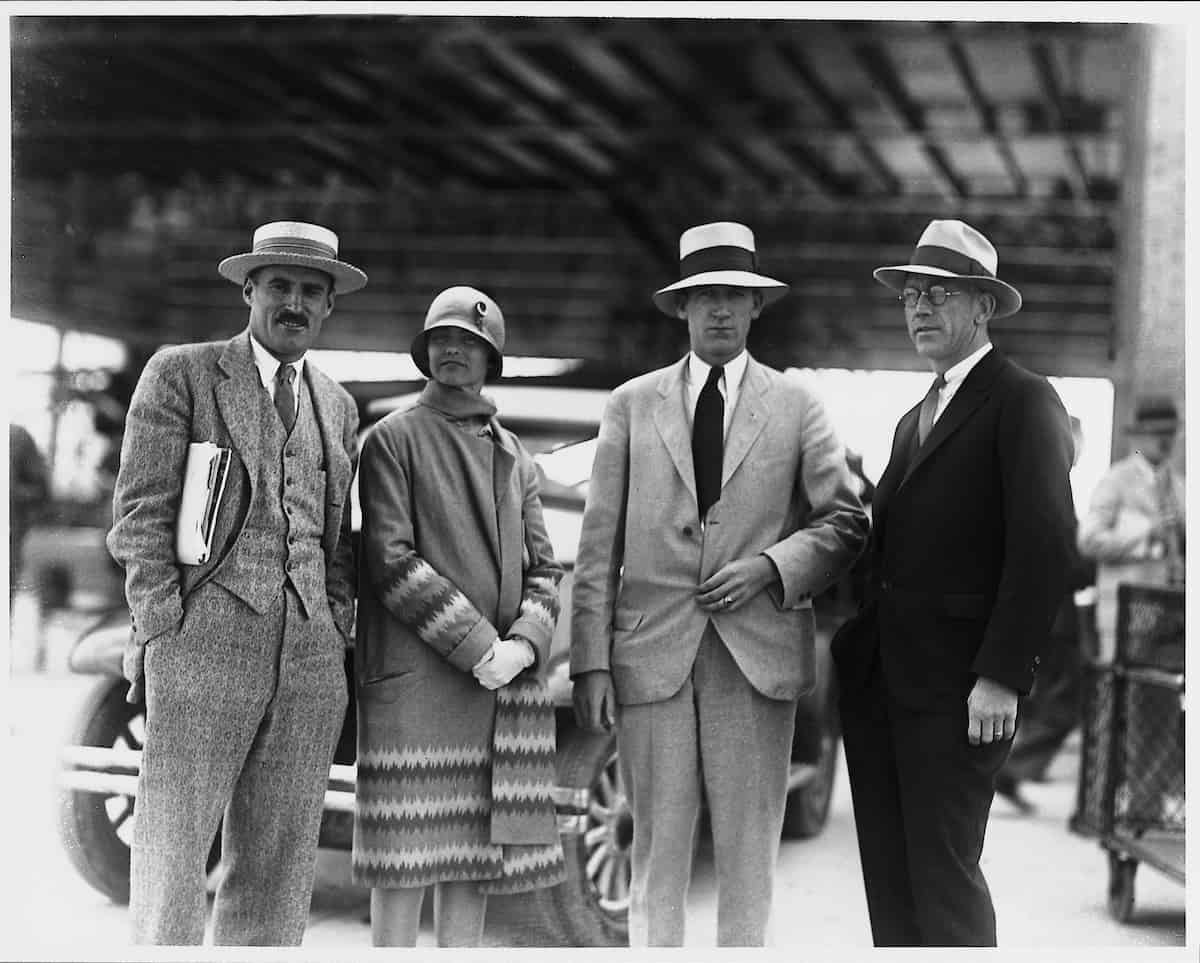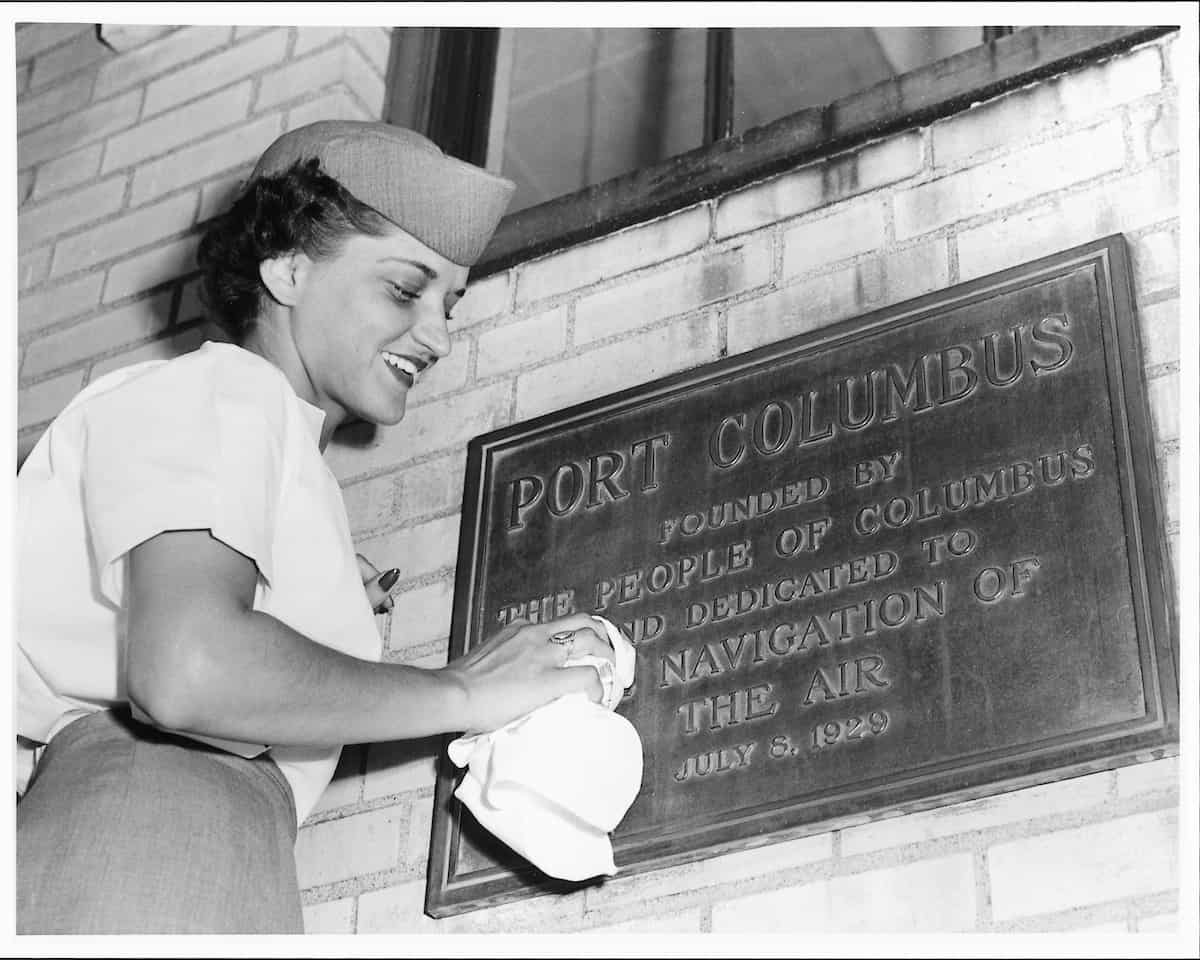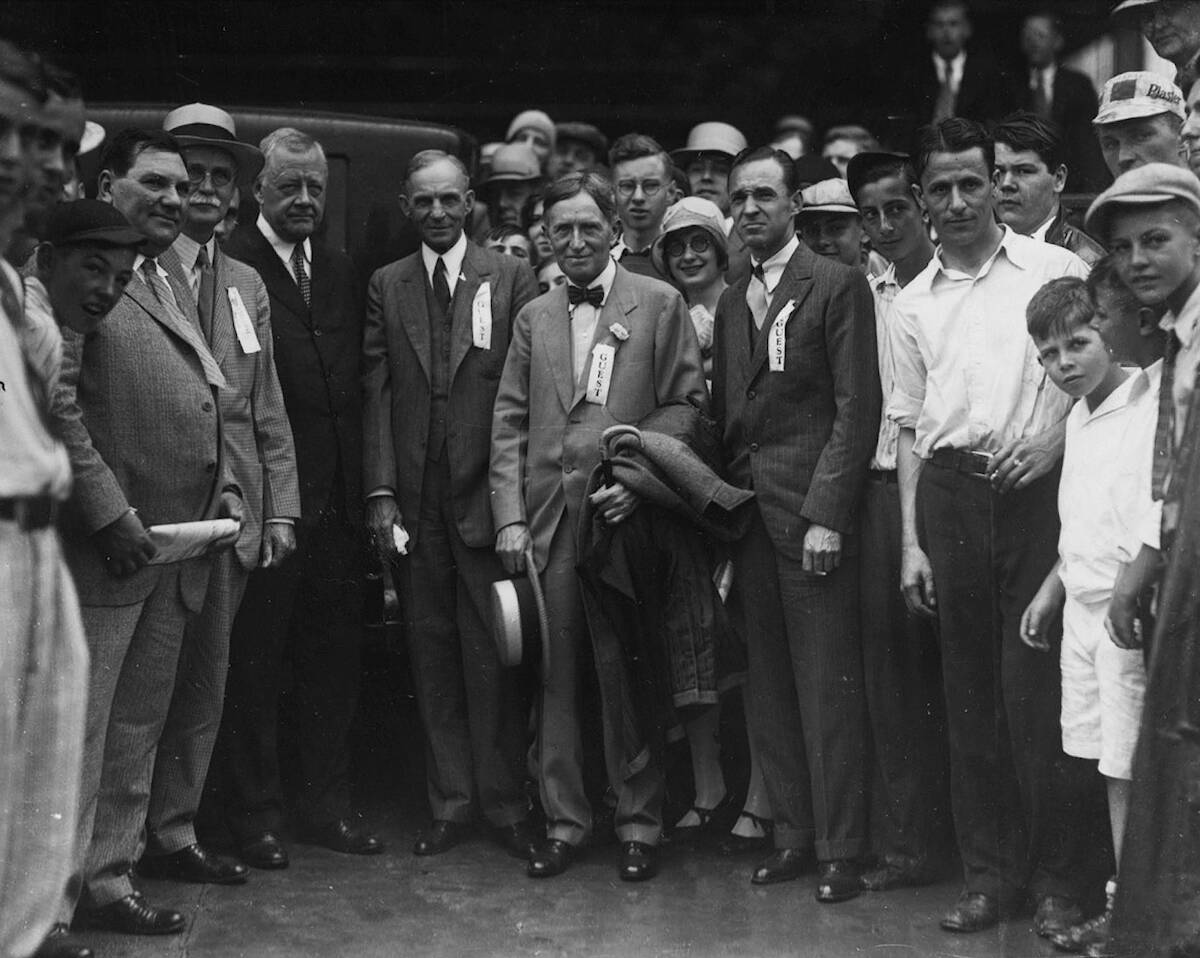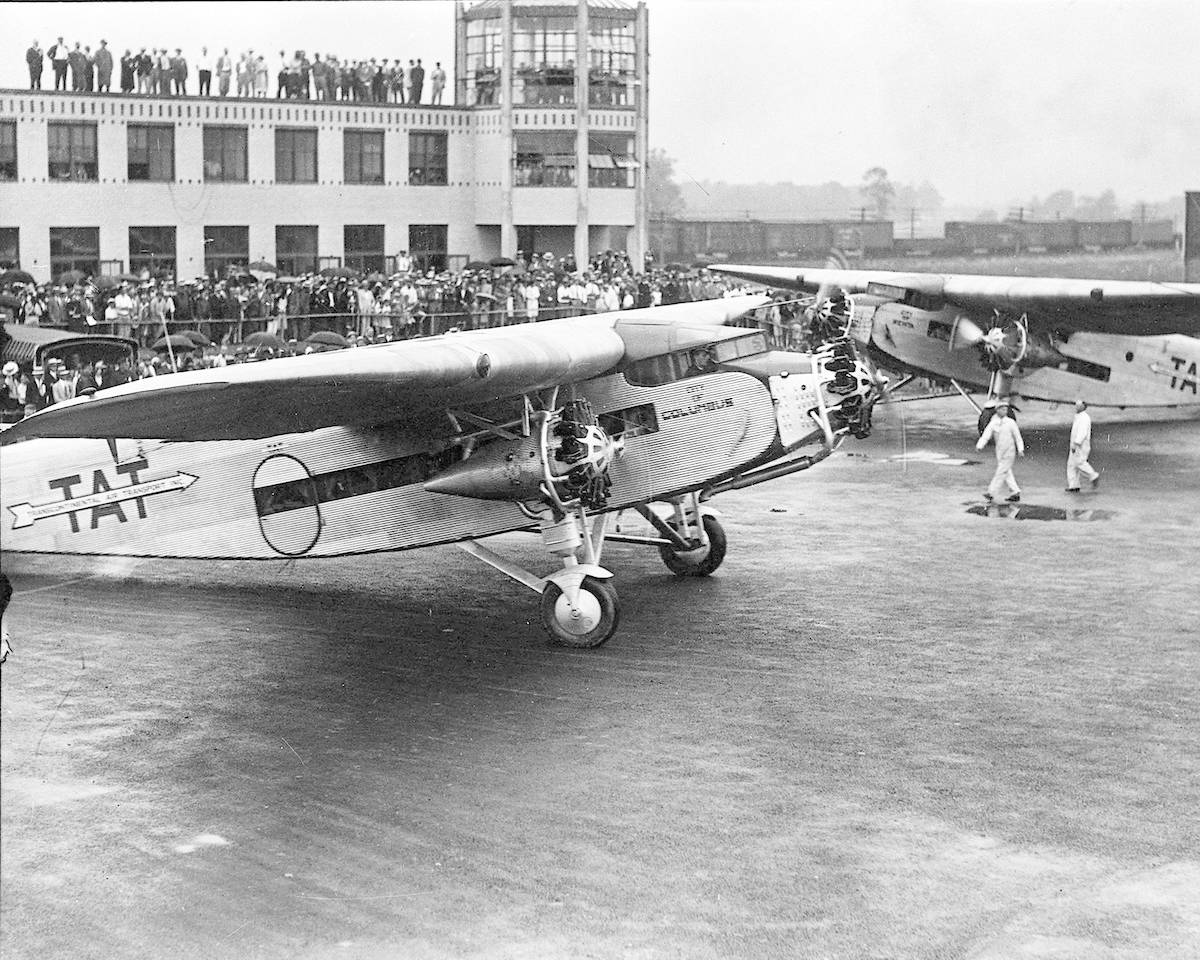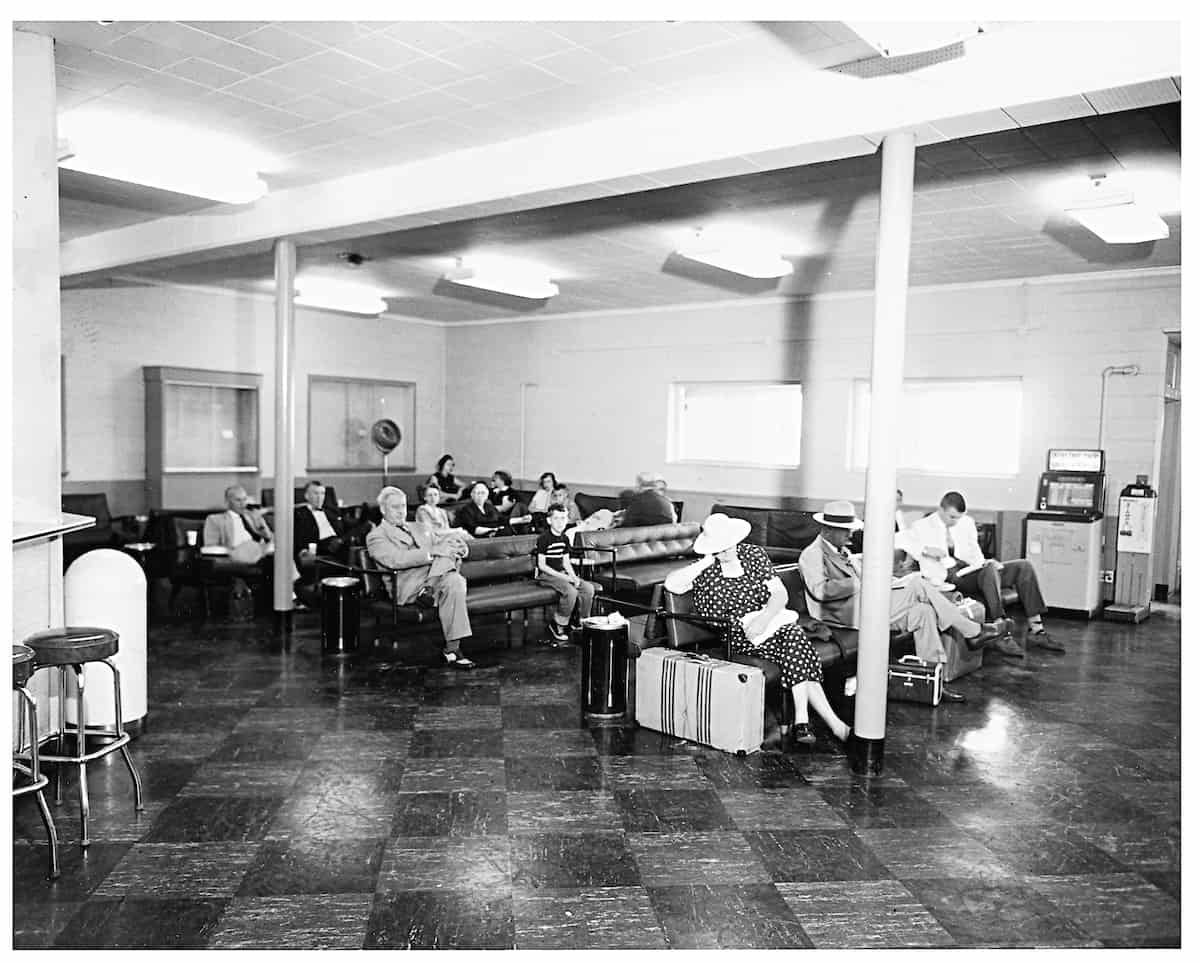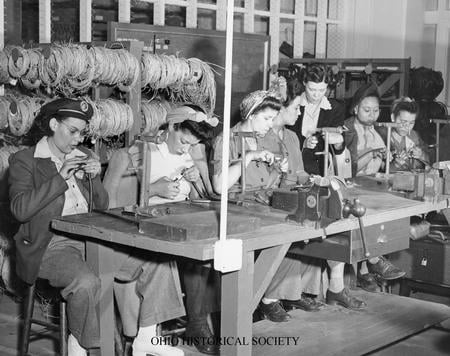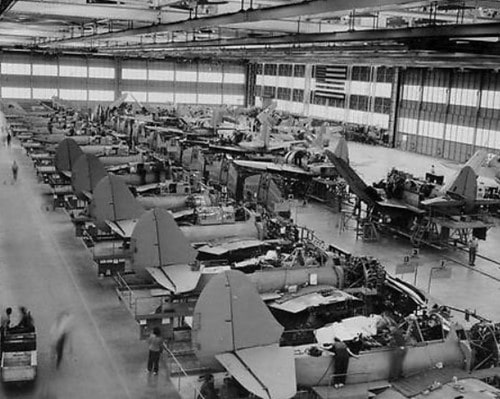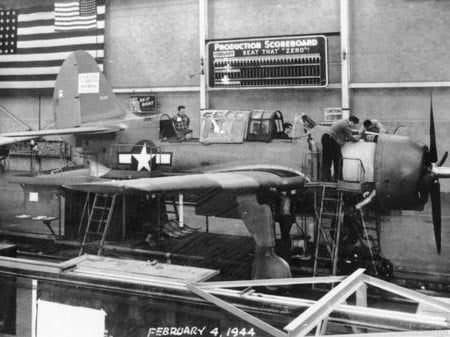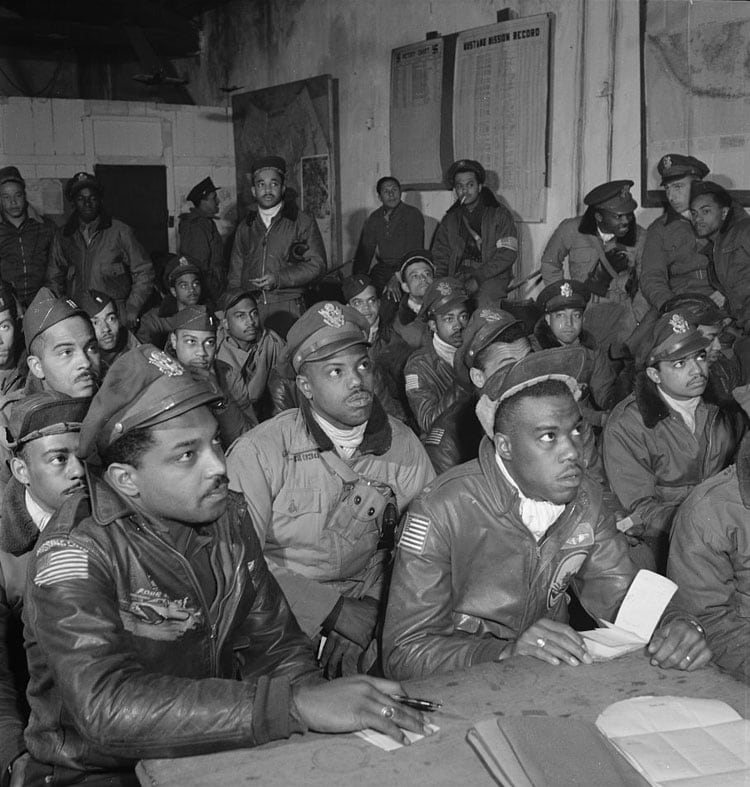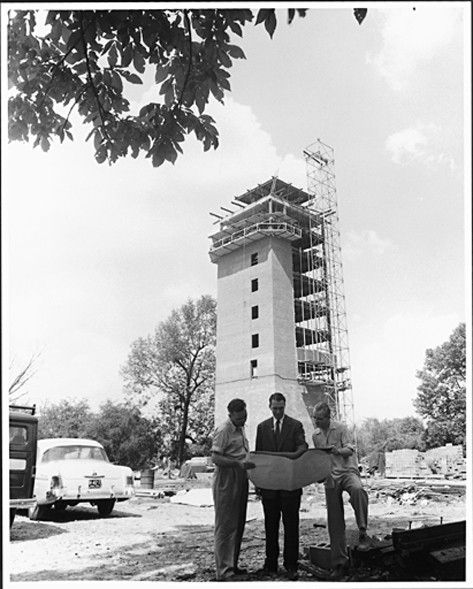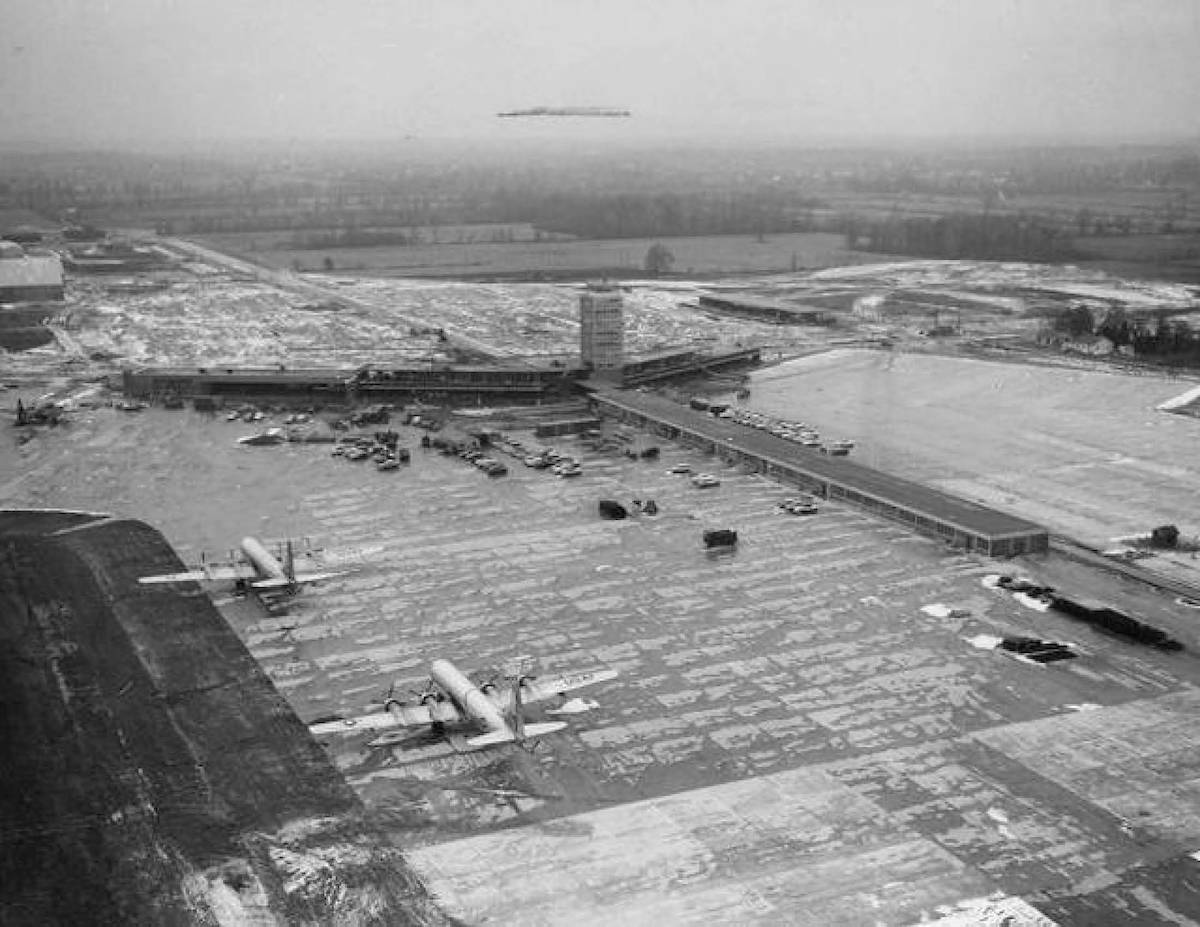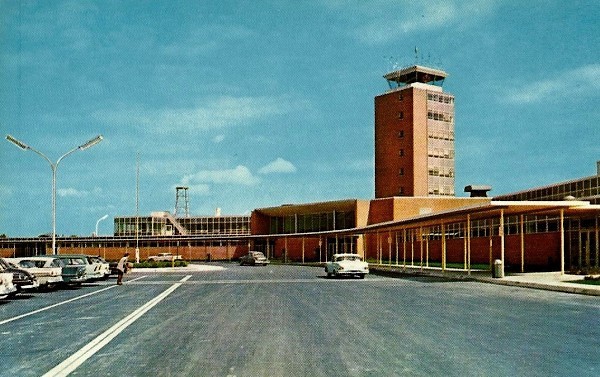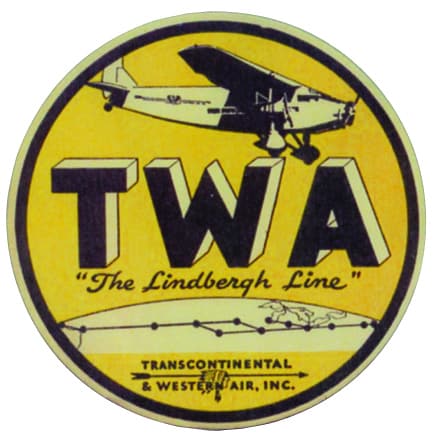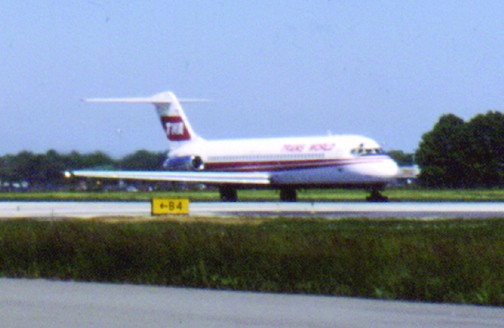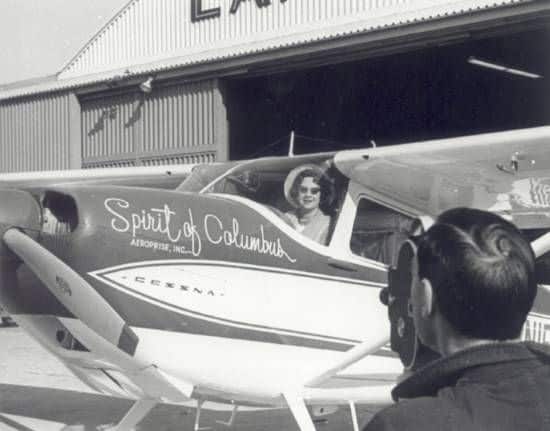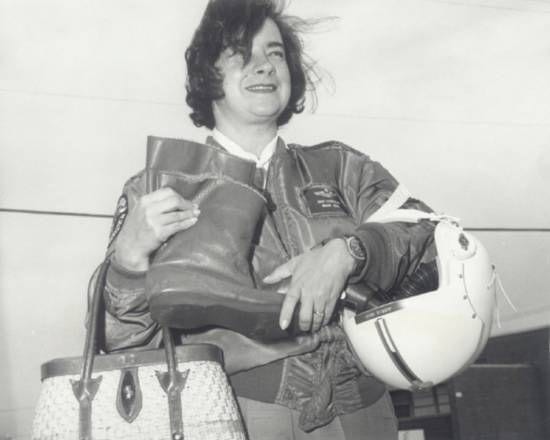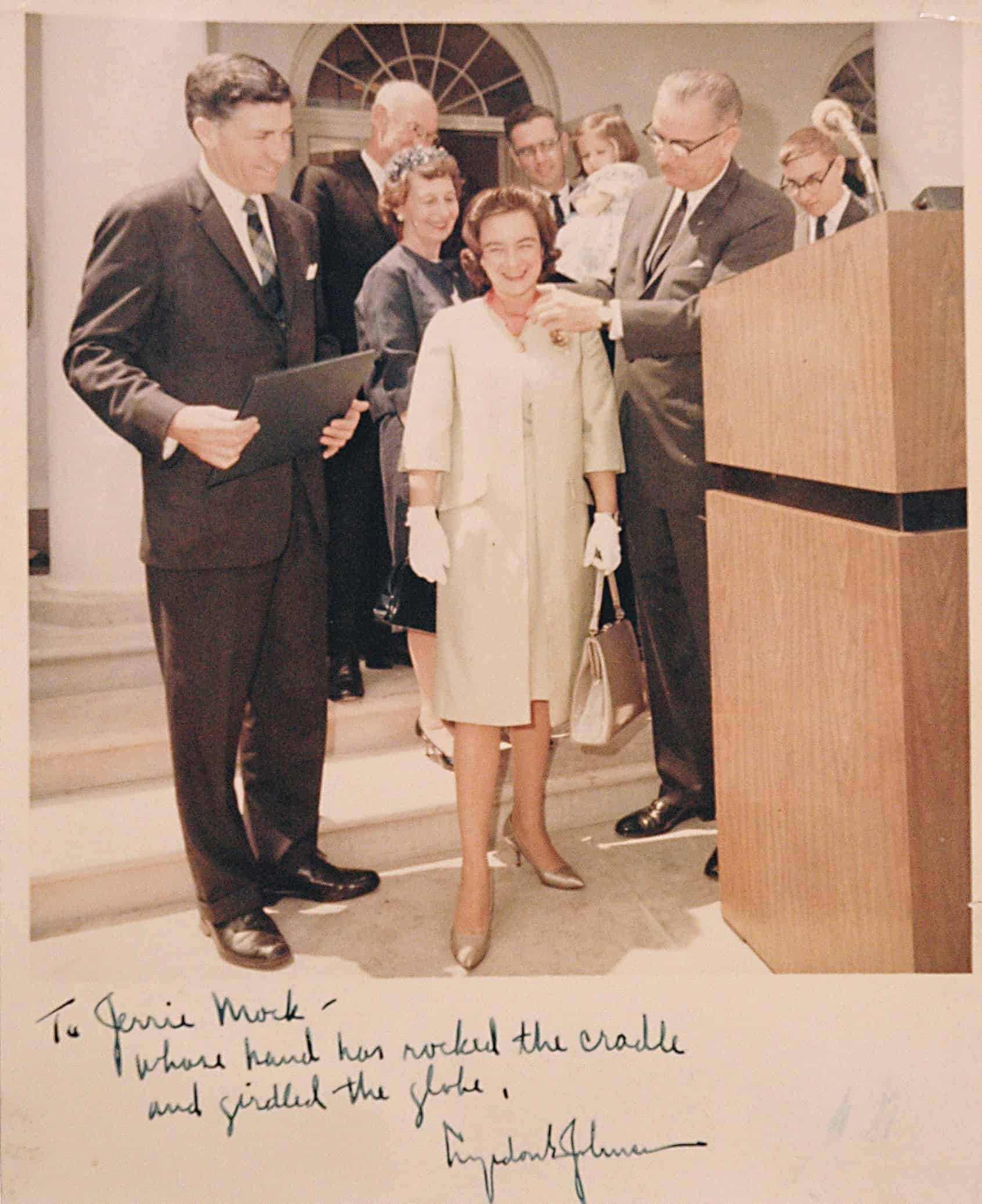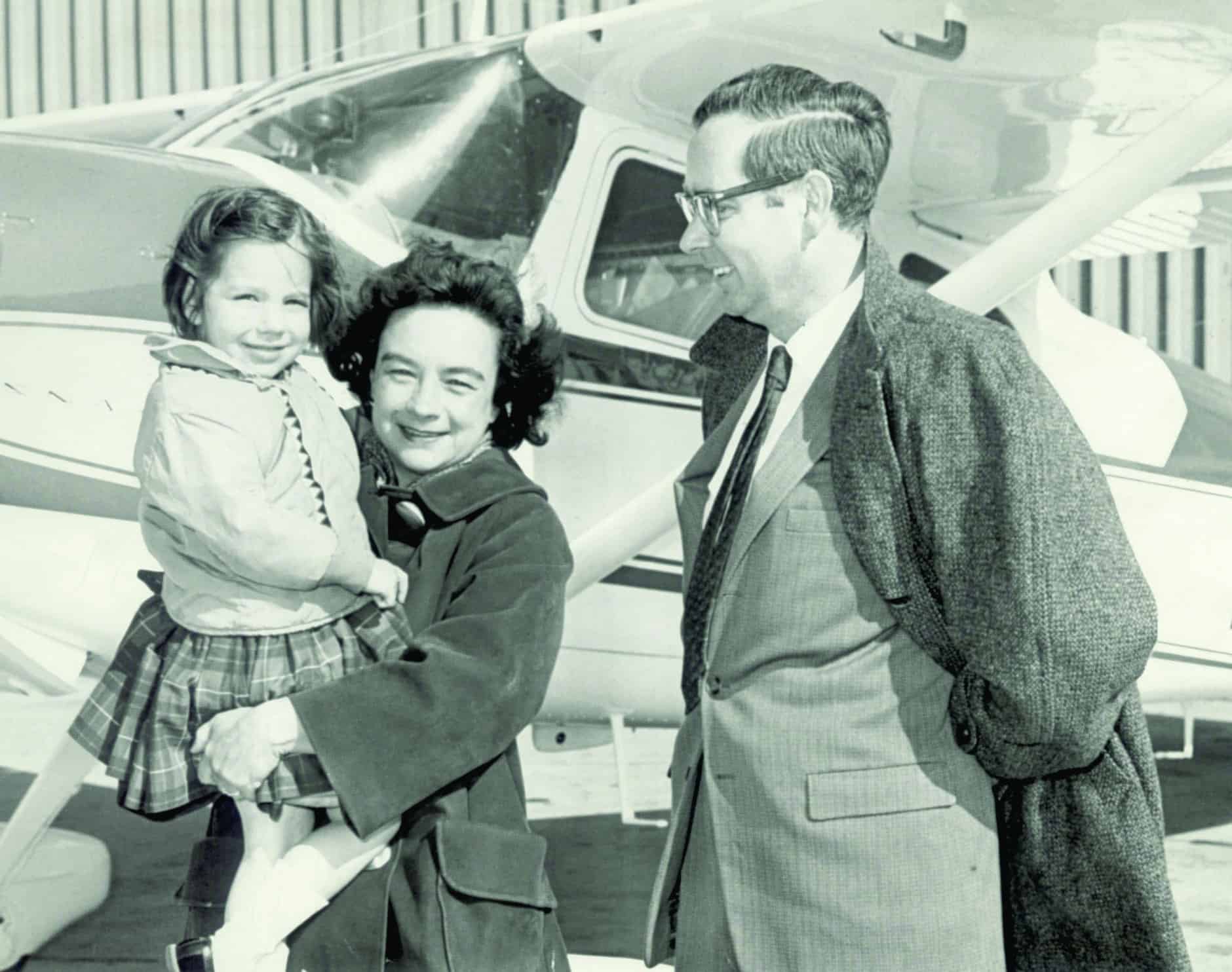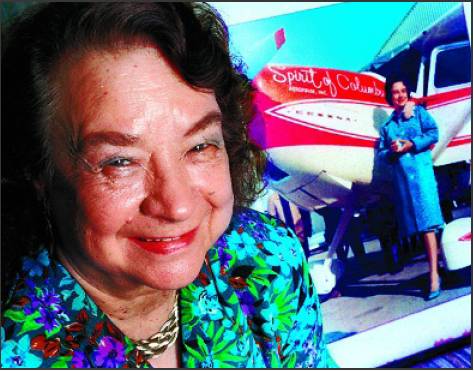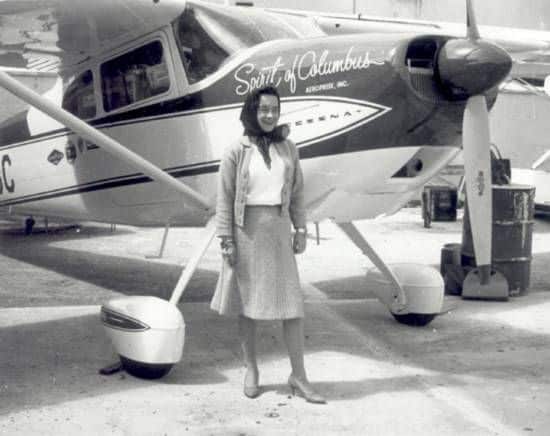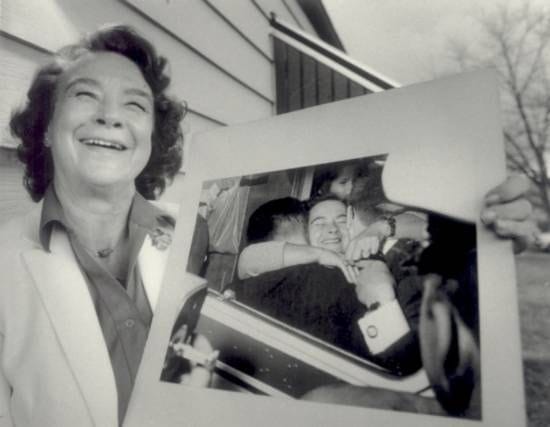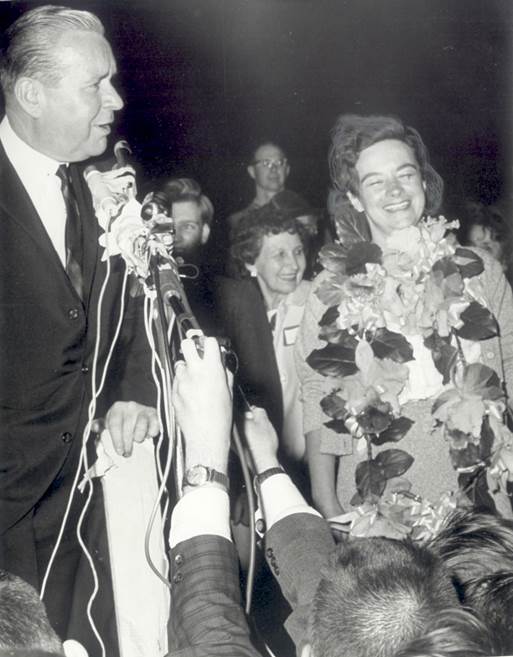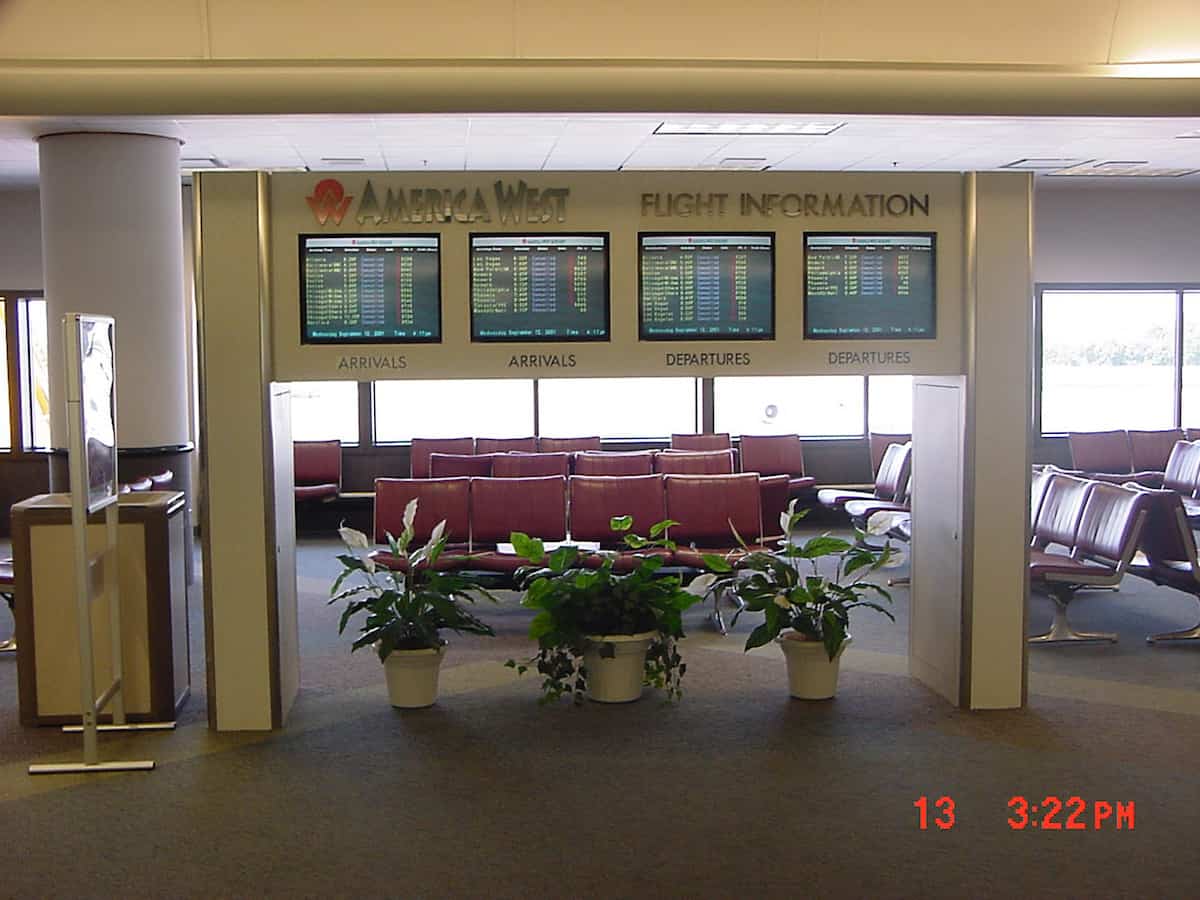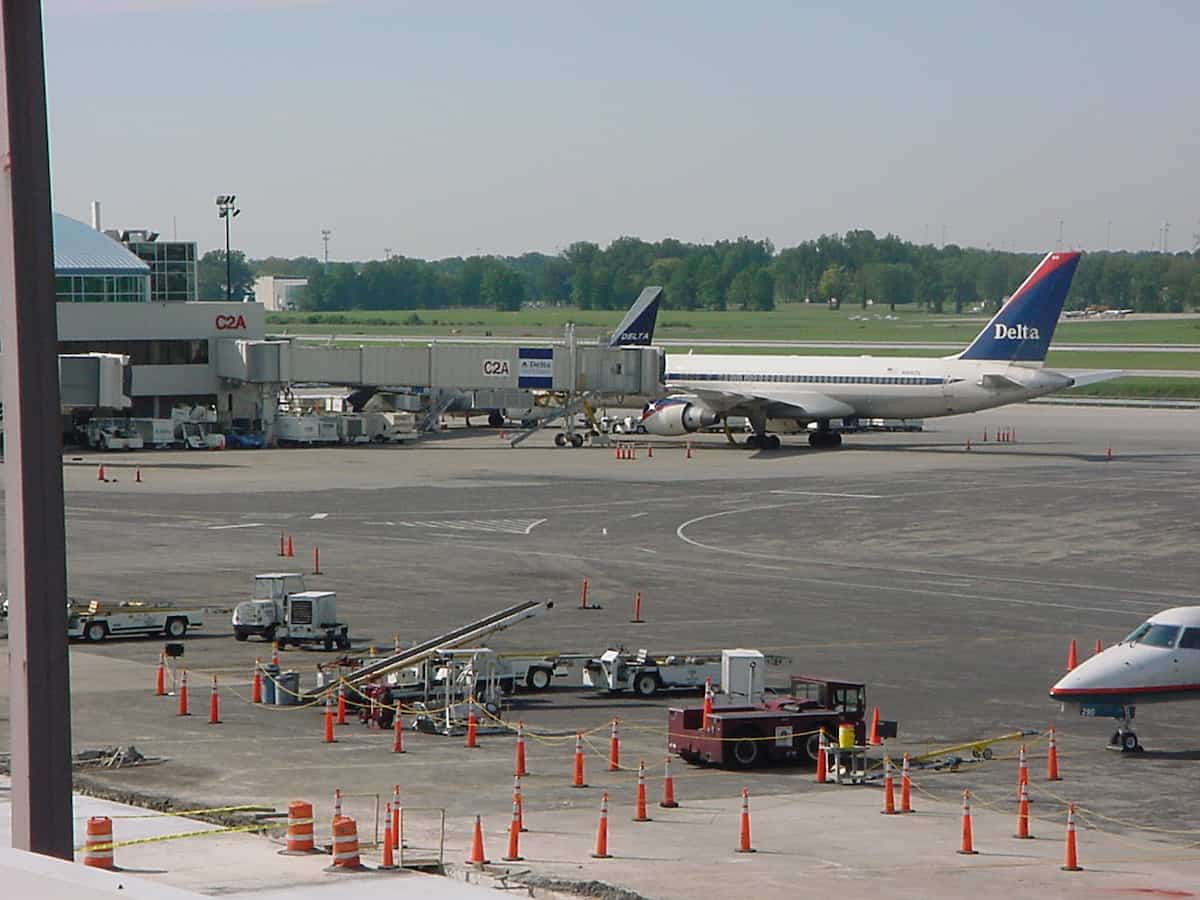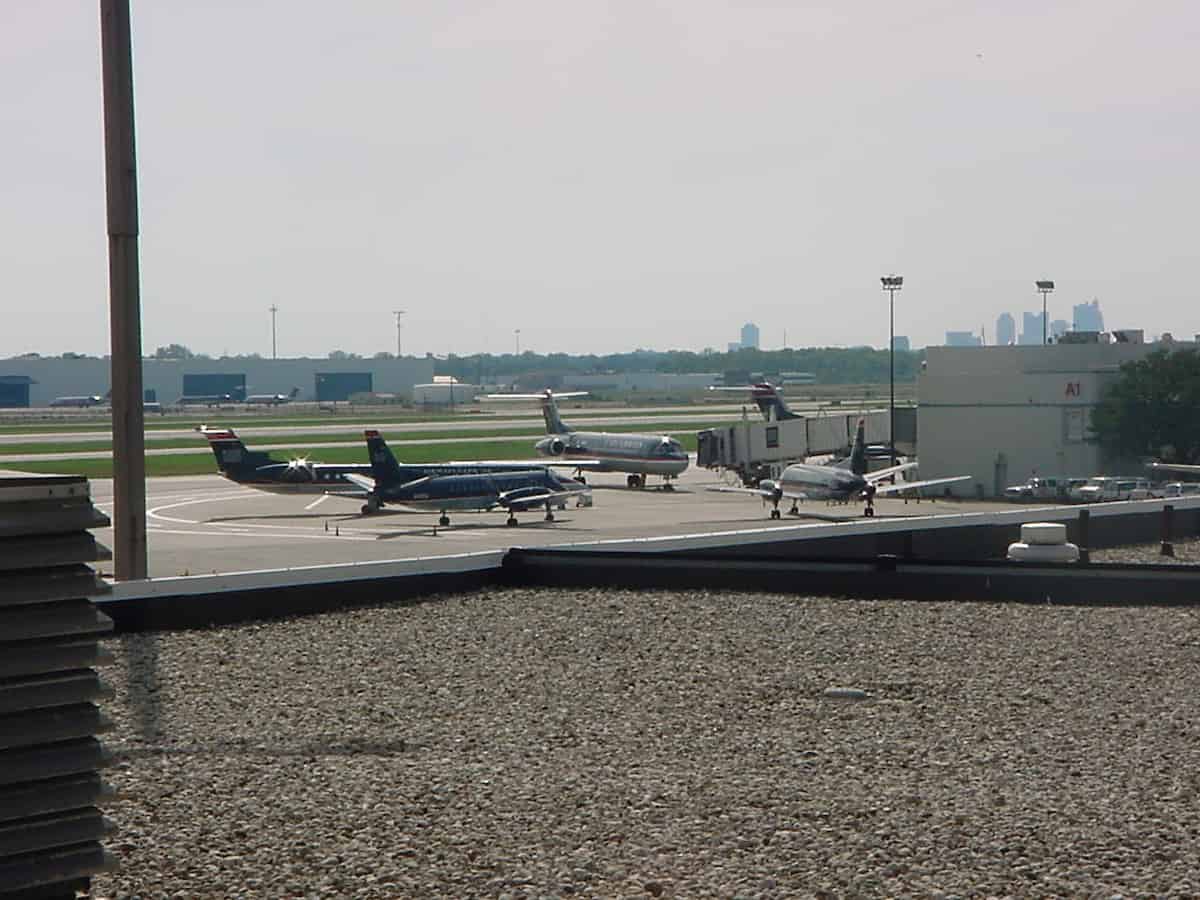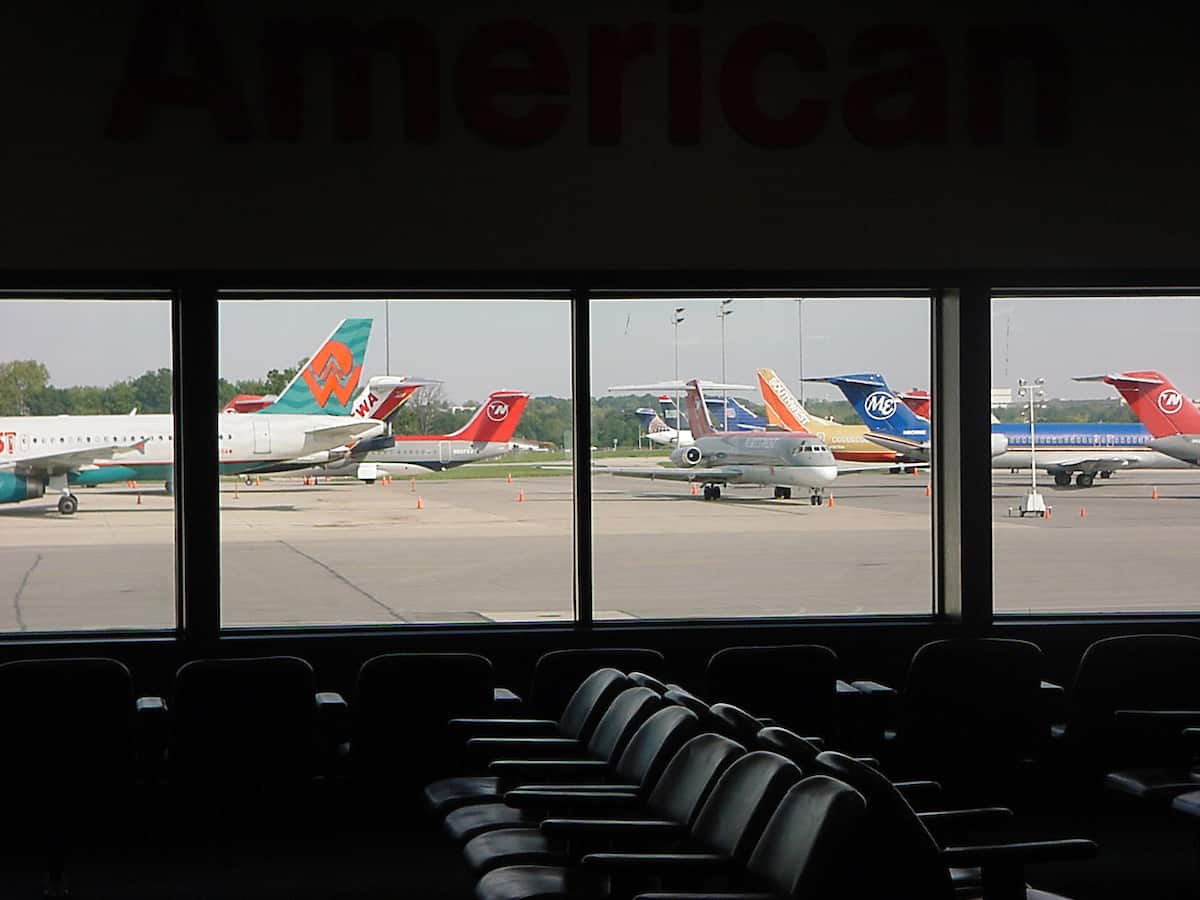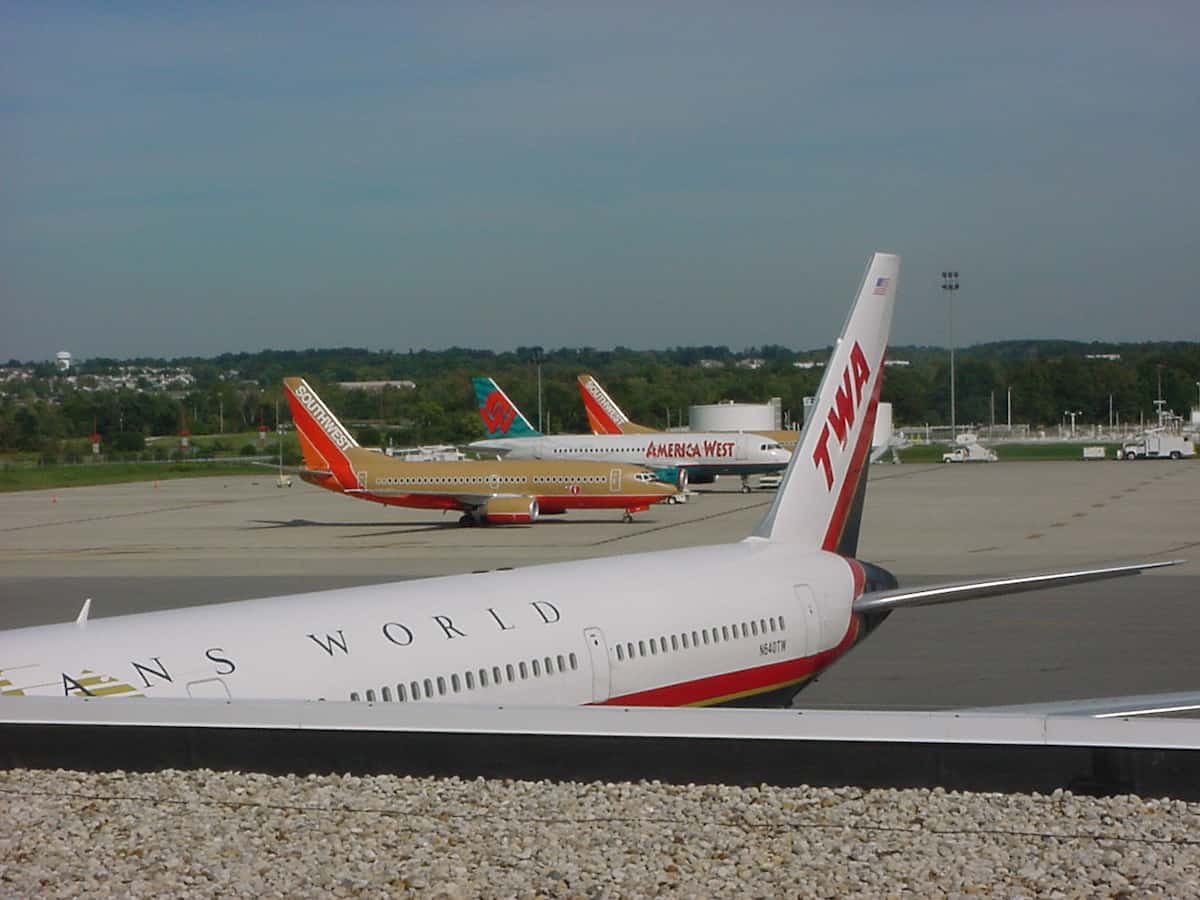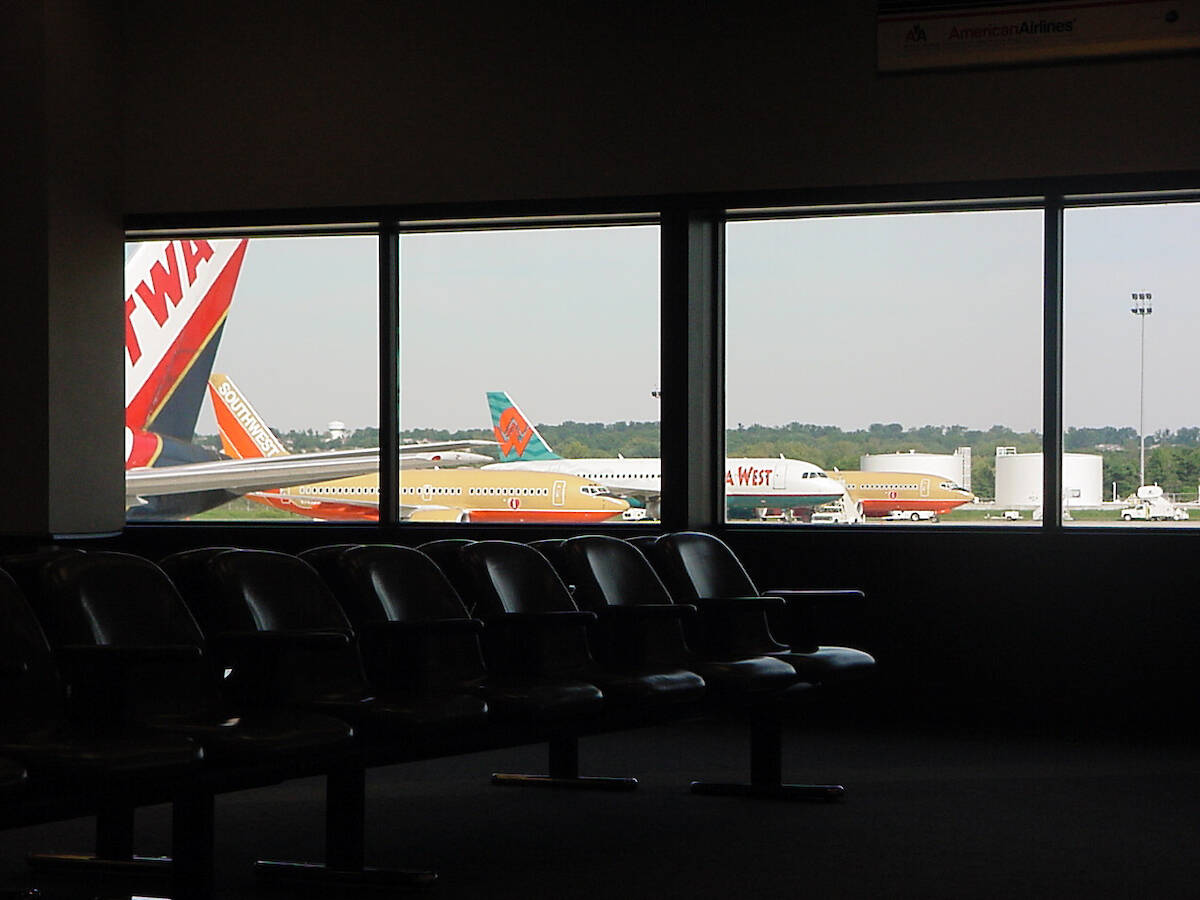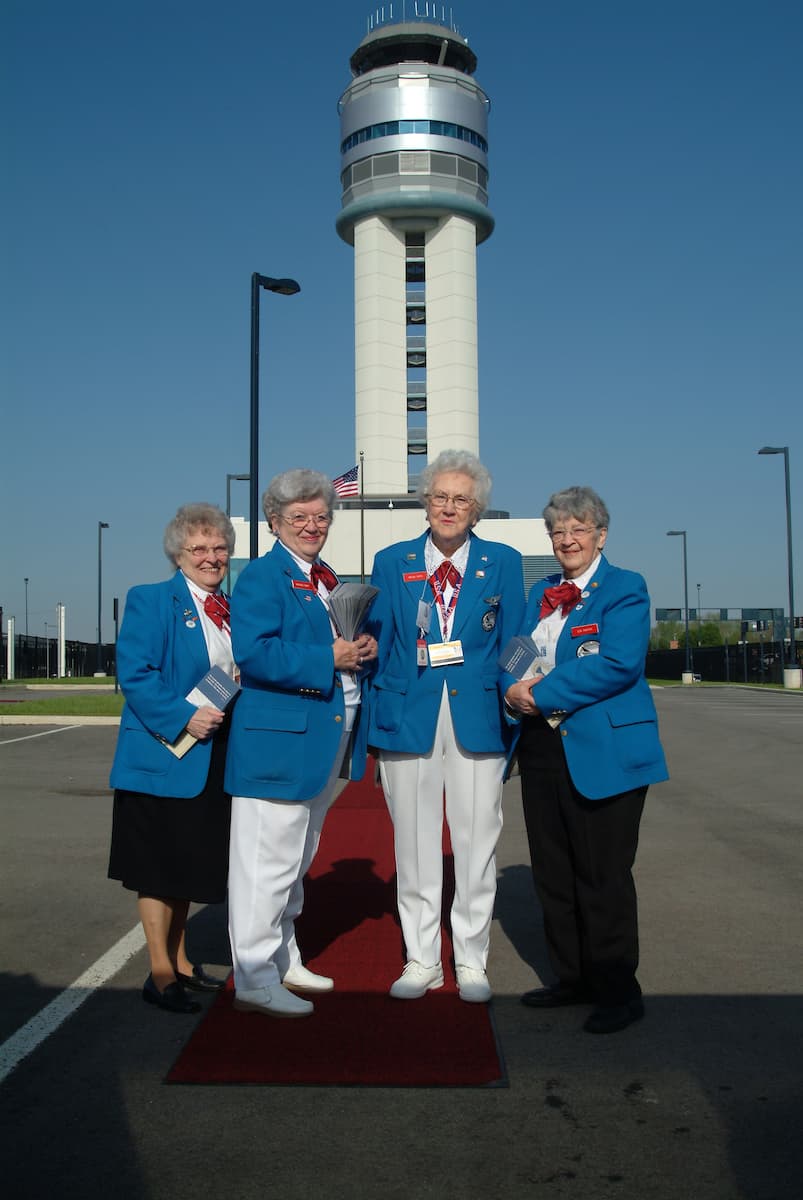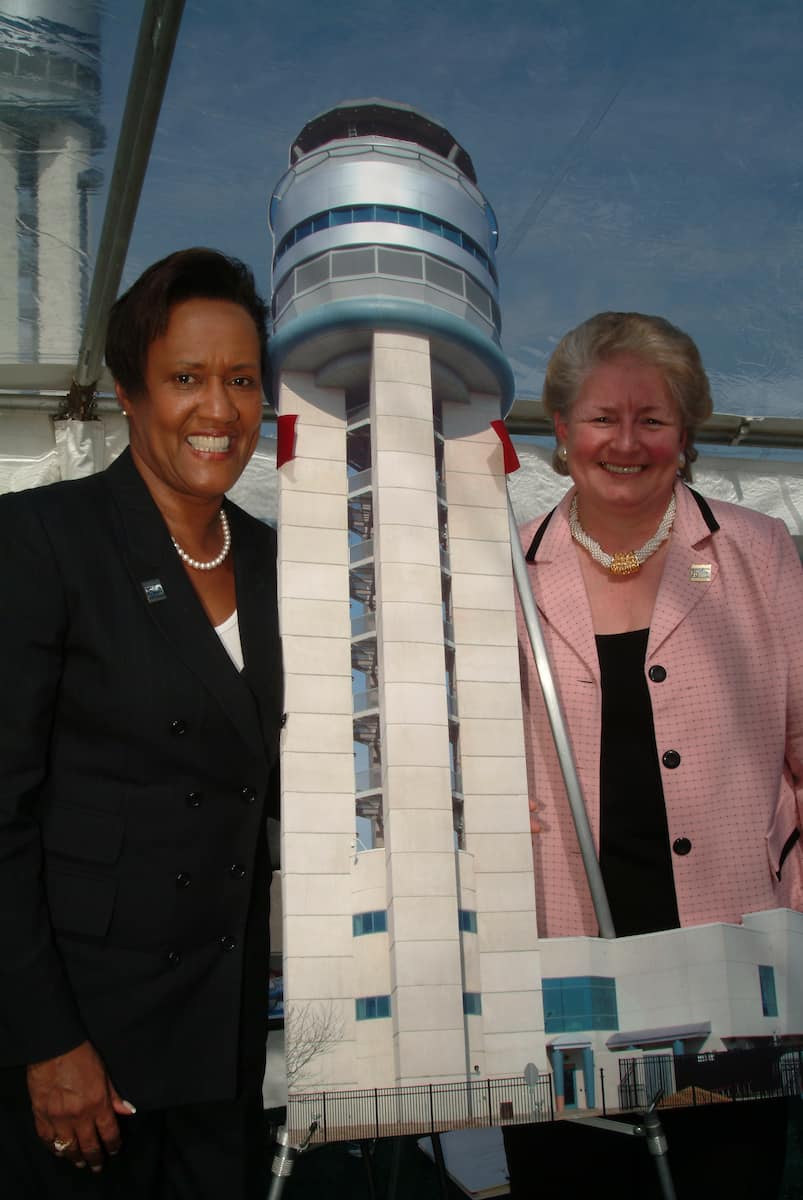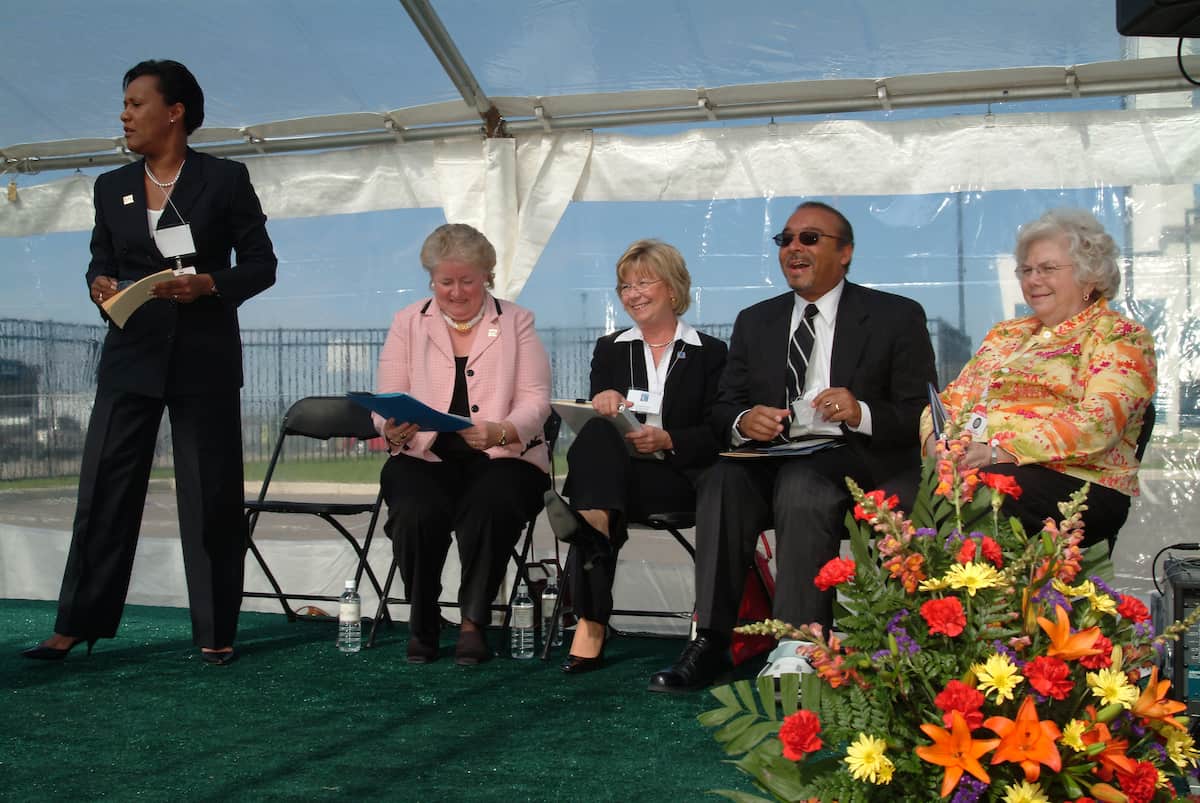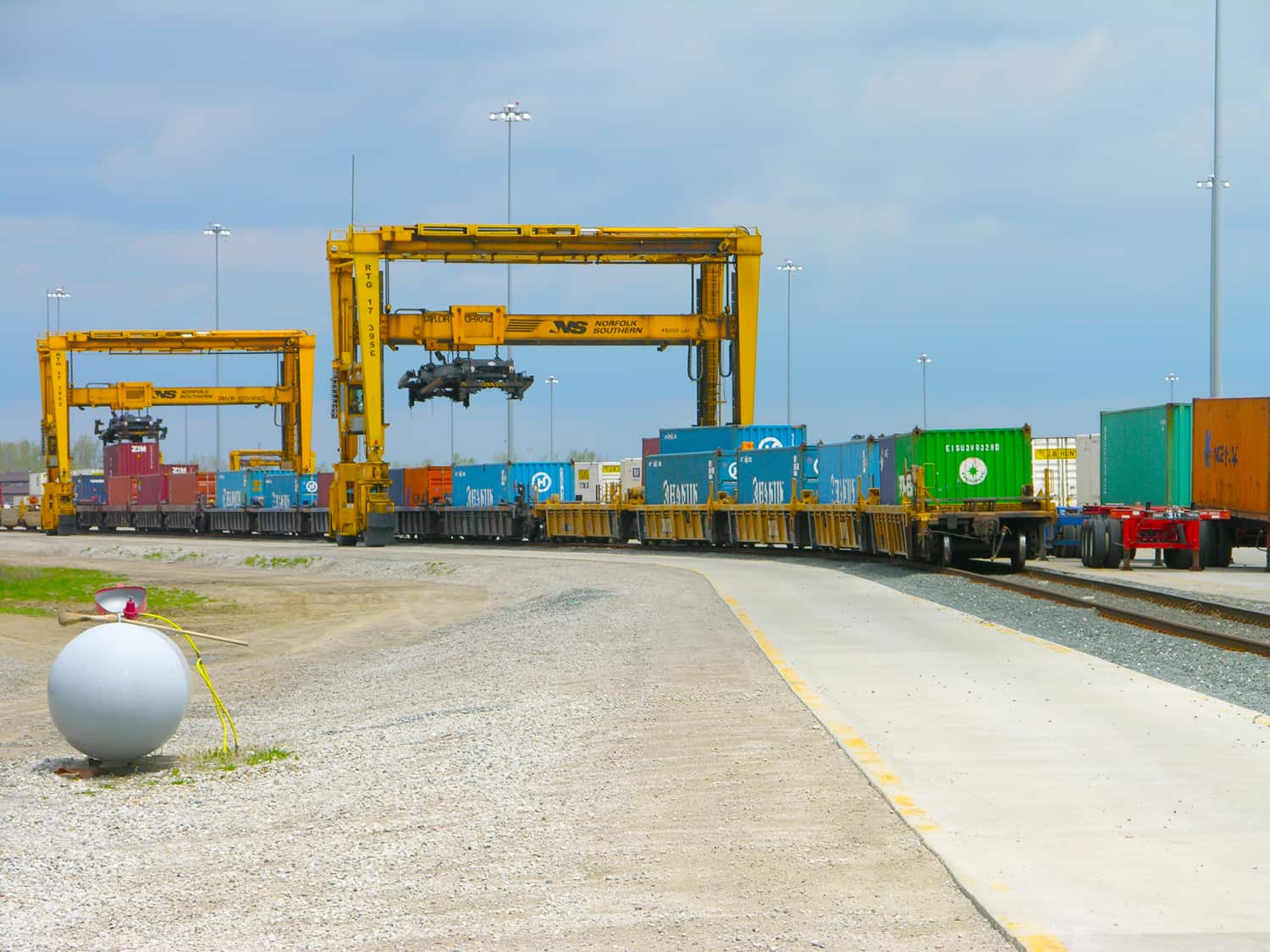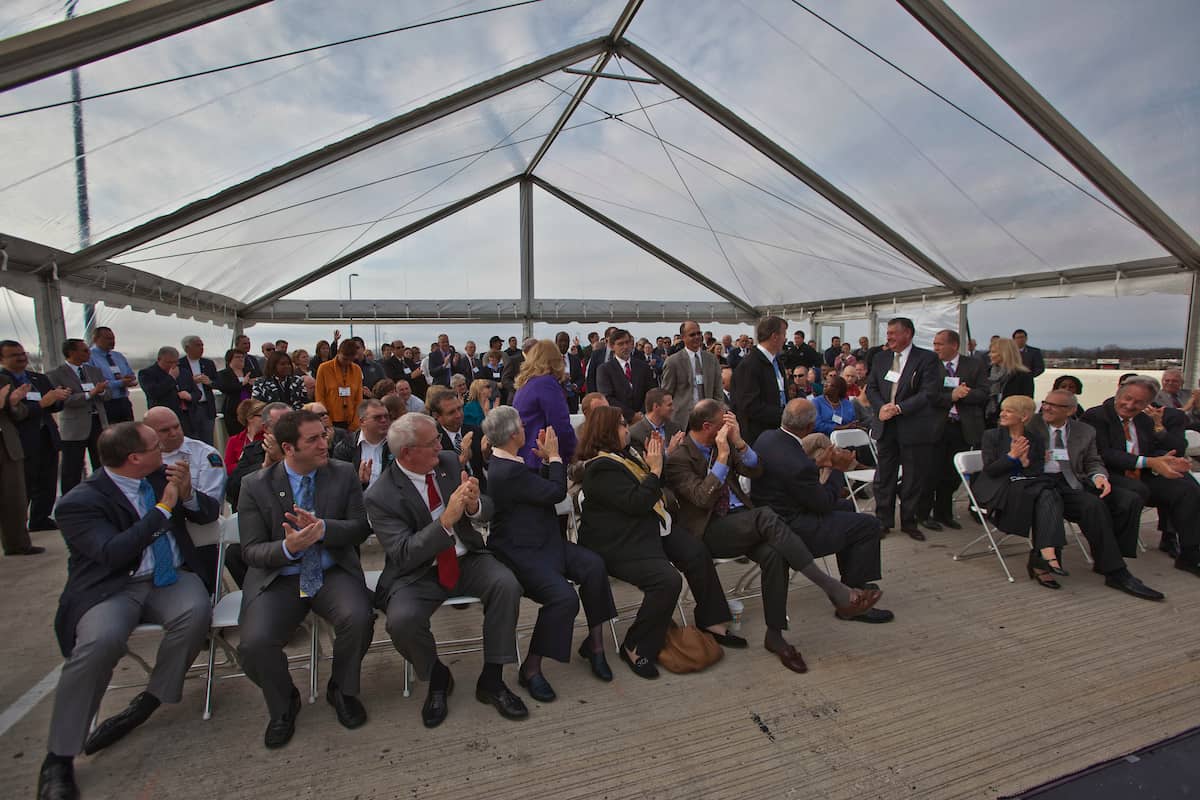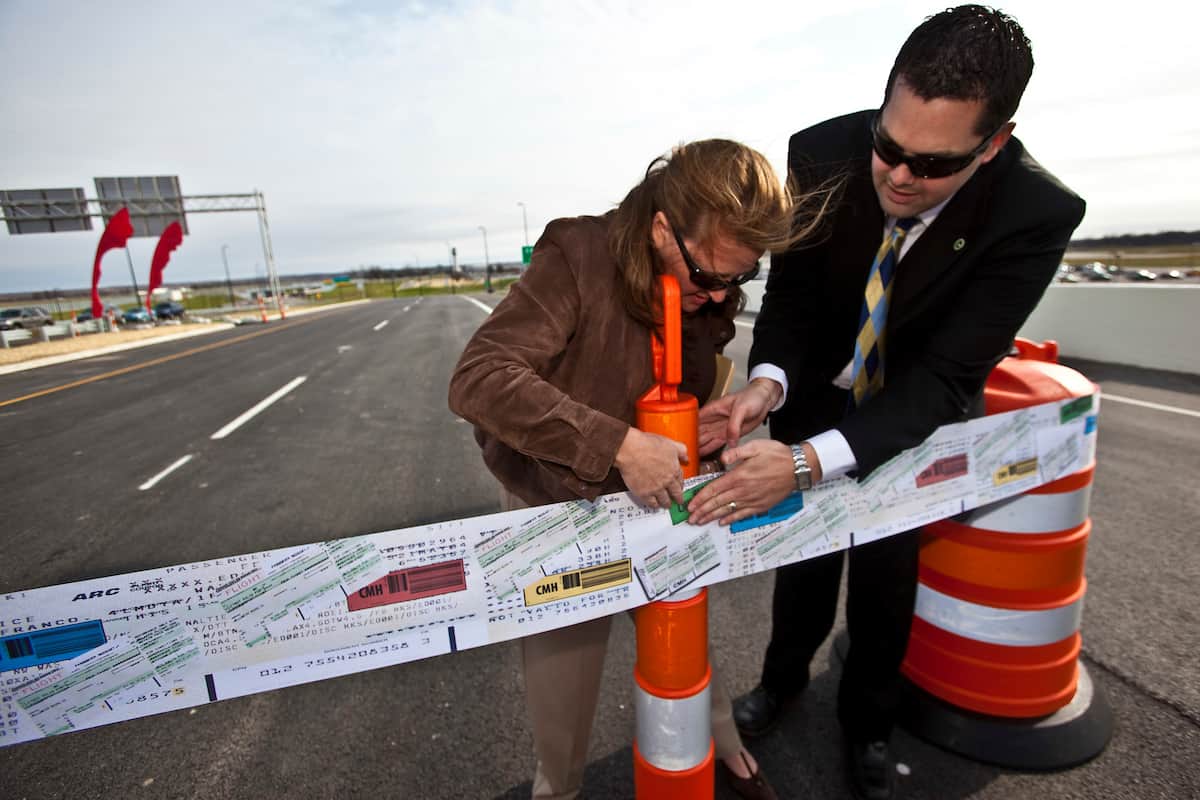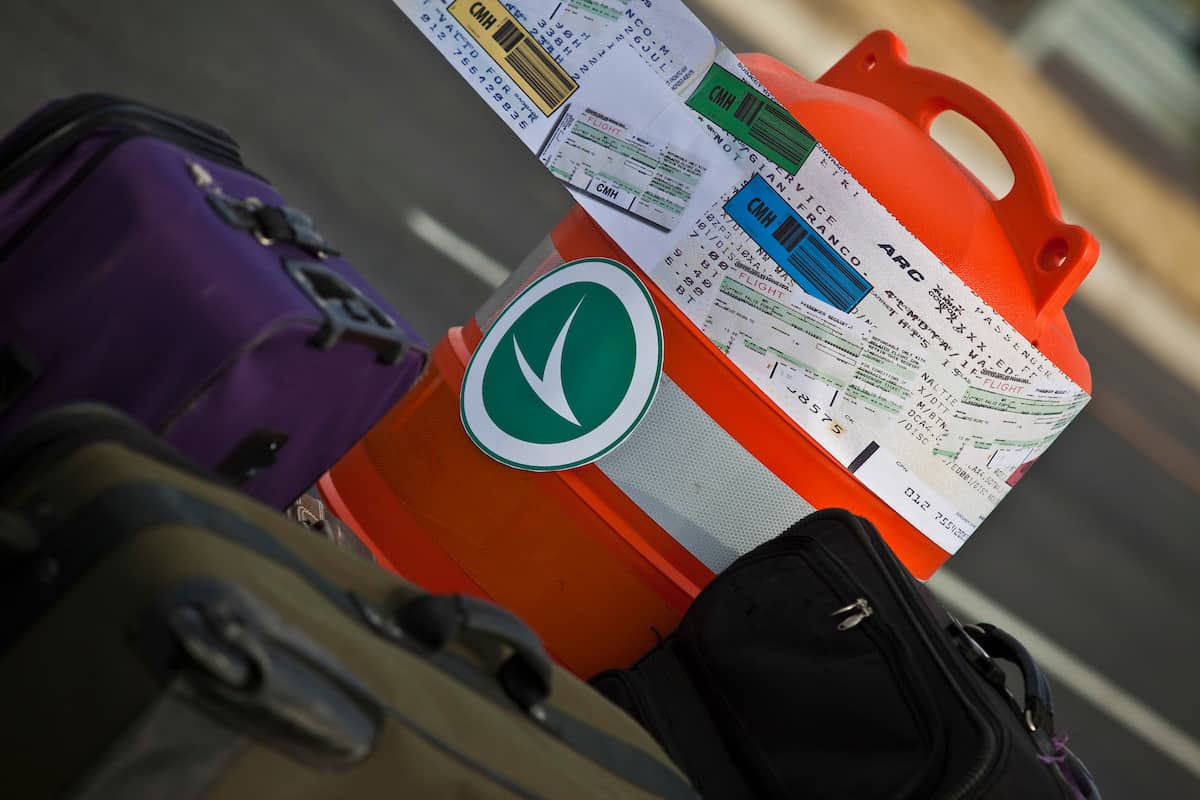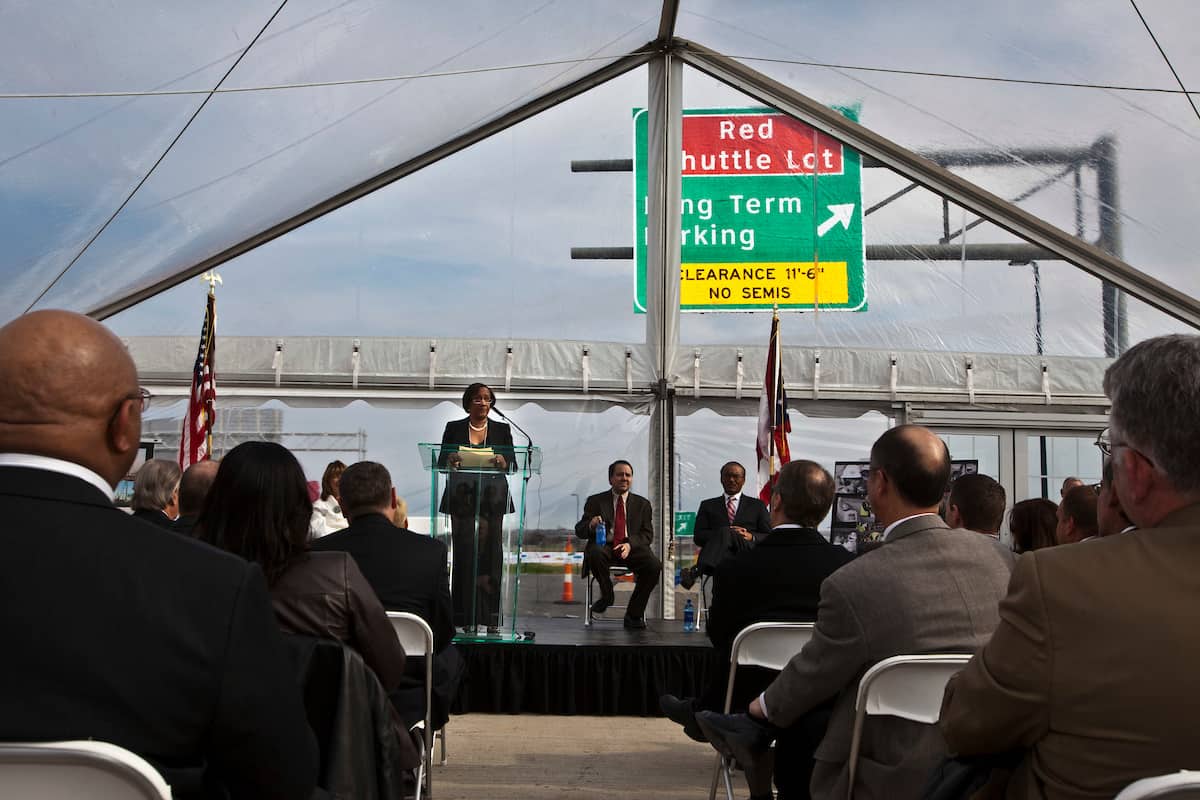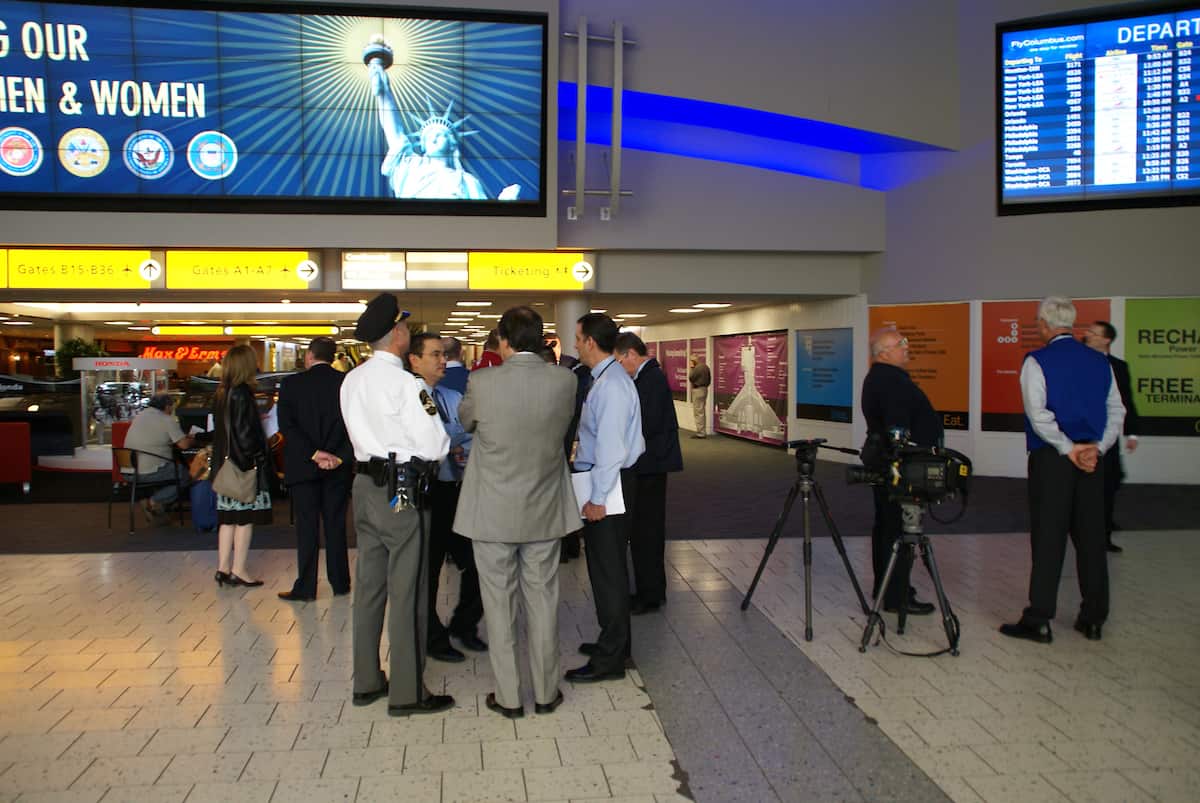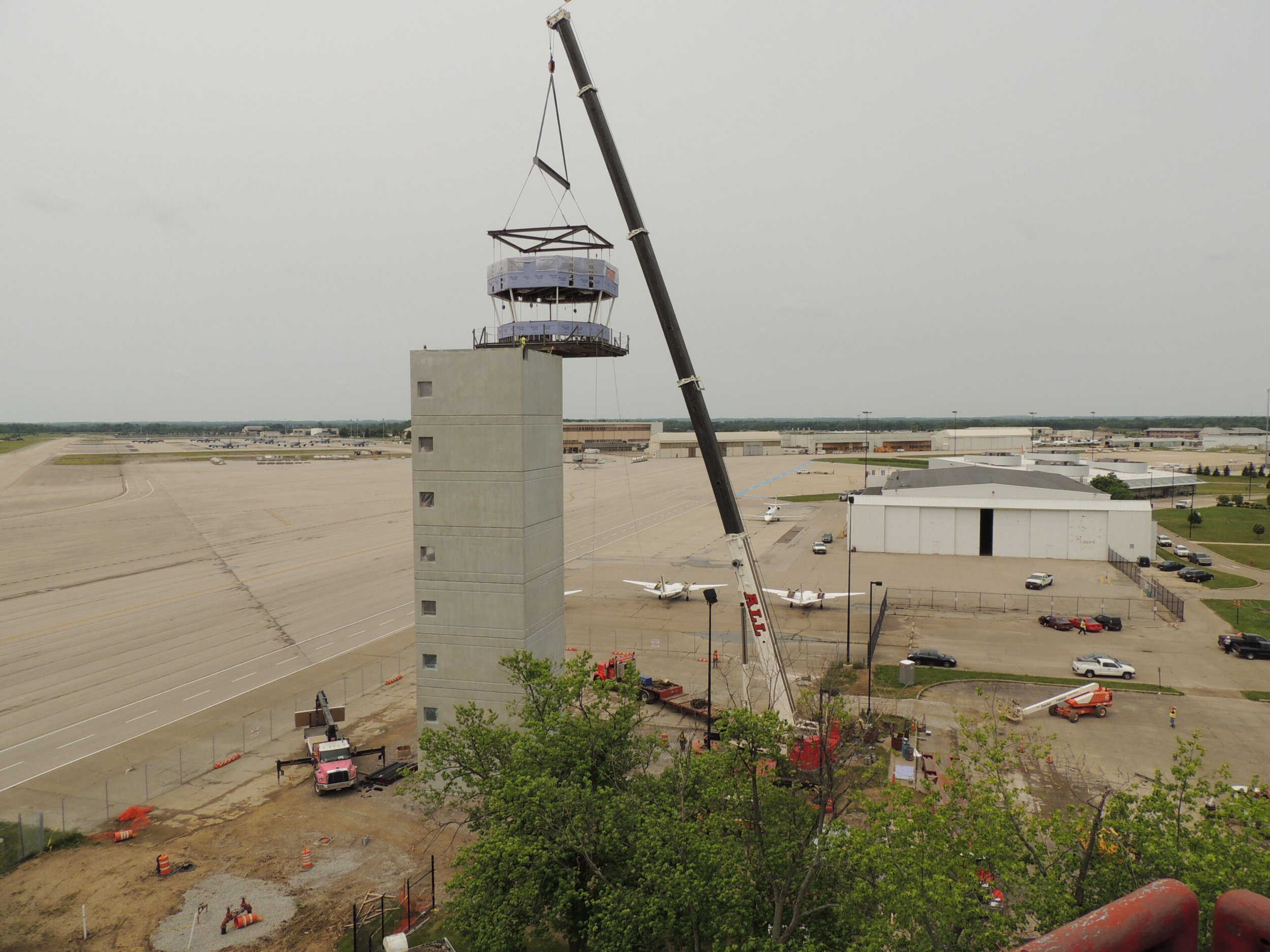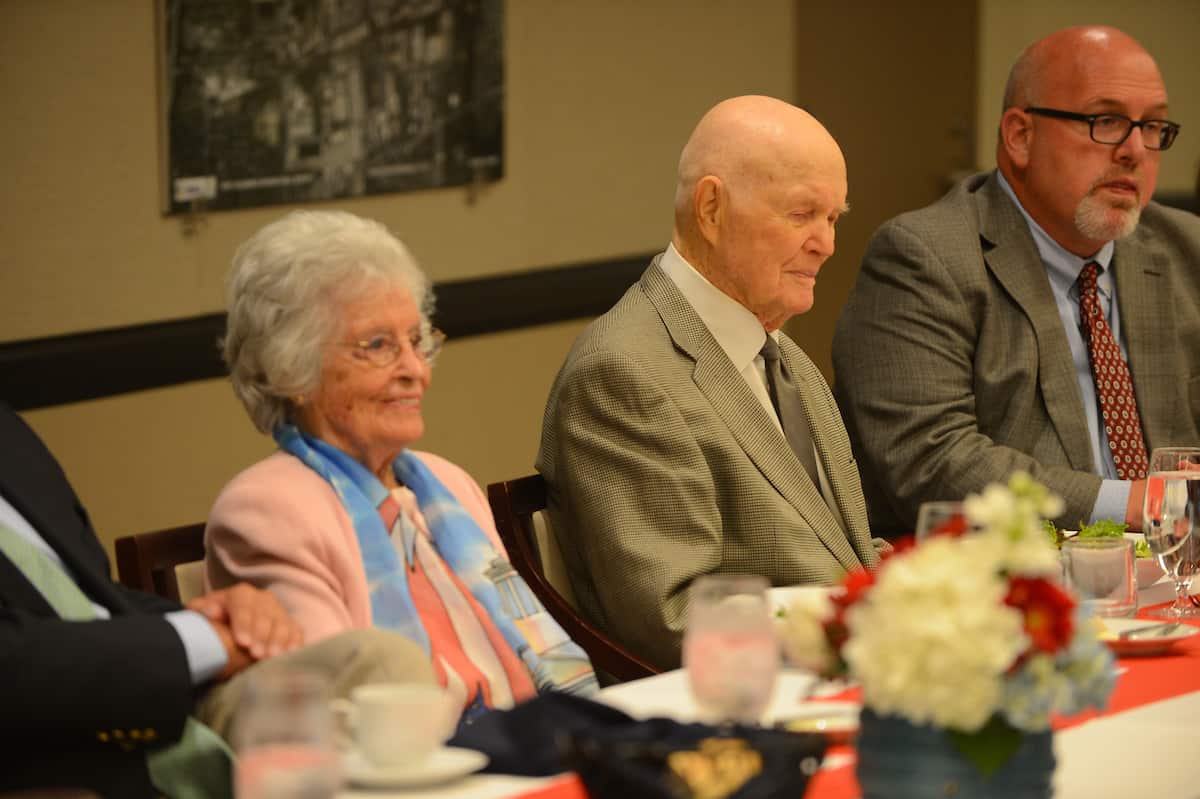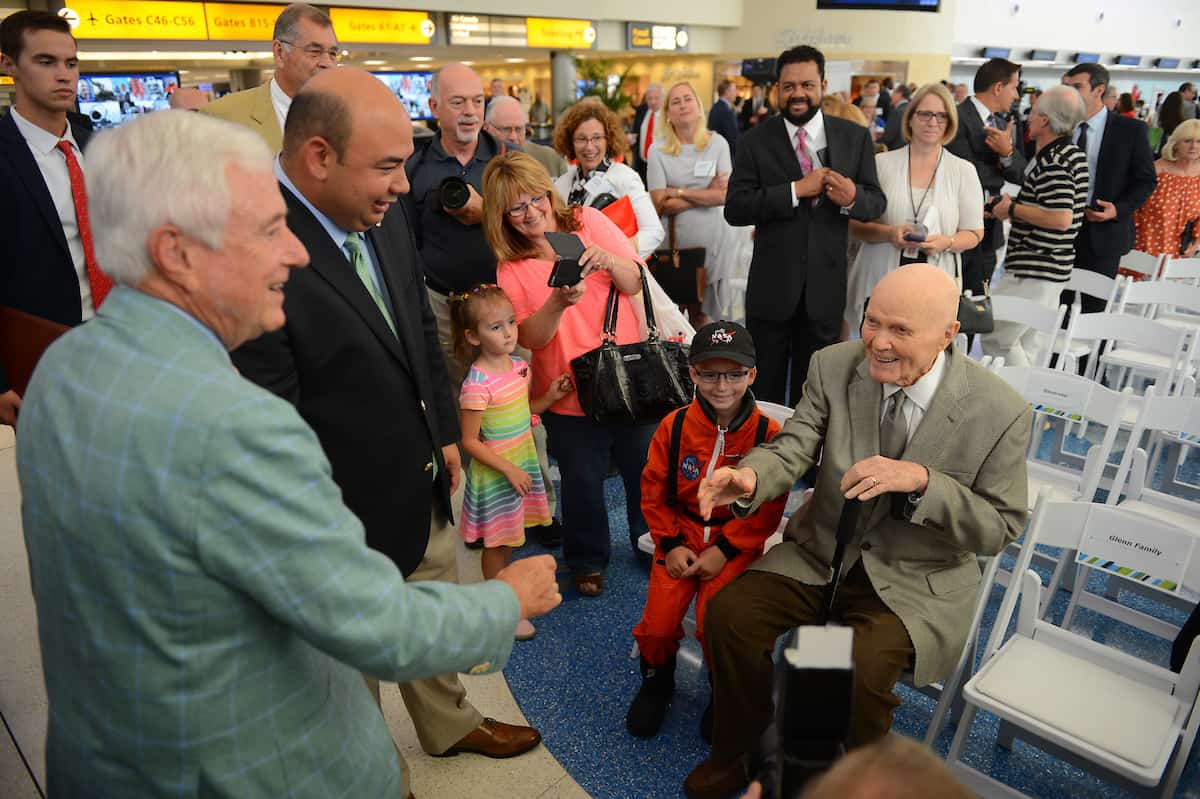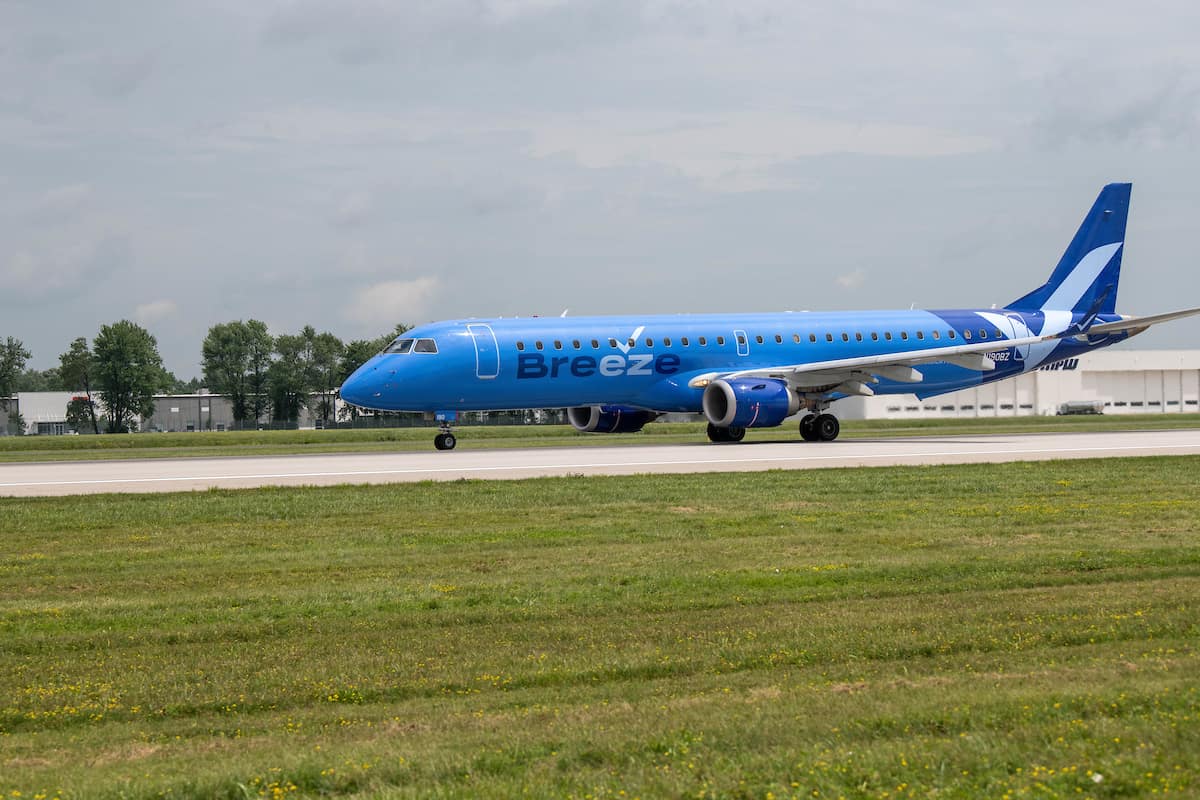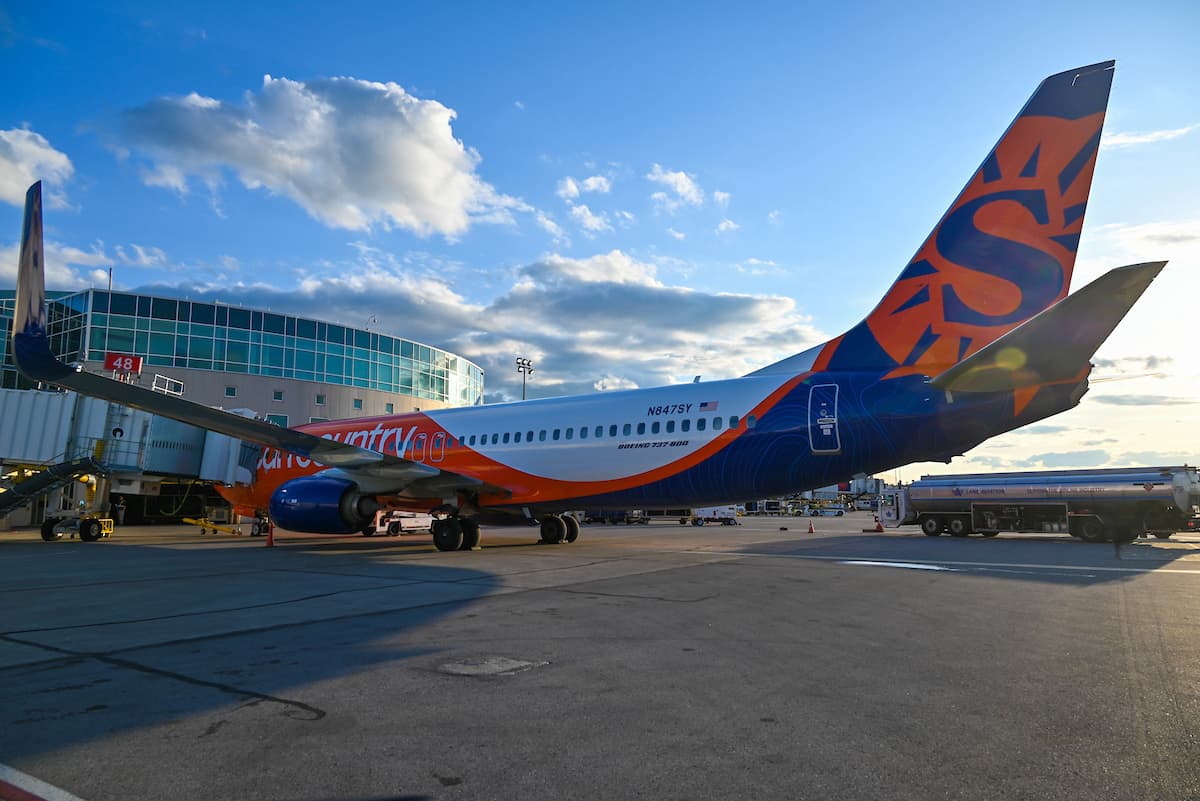History
The history of the Columbus Regional Airport Authority is a story about two entities coming together to deliver superior aviation services.
The Rickenbacker Port Authority was formed in 1979 to redevelop land the military released from the closure of the Rickenbacker Air Force Base and in 1990 took over airport operations. The following year the operations of Port Columbus International Airport (renamed John Glenn Columbus International Airport in 2016) and Bolton Field Airport were transferred from the City of Columbus to the Columbus Airport Authority to provide more focused attention to the business of aviation.
In 2003 the Columbus Airport Authority and the Rickenbacker Port Authority merged to create the Columbus Regional Airport Authority, providing strategic operation and development of all three airports.
- All
- John Glenn International
- Rickenbacker International
-
John Glenn International
From New York to the West coast, Port Columbus became an important stop on the first transcontinental air/rail service. At 7:30 a.m. on July 8, 1929, thousands of people watched as passengers arrived at the Columbus railroad station across from the Fifth Avenue, Port Columbus terminal where two Ford Tri-Motor aircraft await the inaugural flight. By 8:17 a.m. 19 passengers, including famed aviatrix Amelia Earhart, took off aboard the aircraft bound for Oklahoma, the next stop on the transcontinental journey. At the time, the average price for a one-way ticket was $351.94.
To pinpoint the airport, a high-intensity beacon light atop Port Columbus tower flashed the initials “PC” in Morse Code. It’s reportedly the first of its kind in the U.S.
-
John Glenn International
Public Works Administration workers built Port Columbus’ east-west runway during the Great Depression.
-
John Glenn International
Curtiss-Wright Corporation leased 83 acres of airport property for the government and produced planes that made the first attack on Rabaul during World War II. It’s one of just 31 non-military fields in the U.S. capable of handling the era’s military aircraft. Curtis-Wright made about 6,000 planes during the war.
-
John Glenn International
During the war, the federal government took over Port Columbus and the Civil Aeronautics Authority allocated $1.5 million to improve the airport, which included lengthening the runways.
-
Rickenbacker International
The day after the Dec. 8, 1941, Japanese attack on Pearl Harbor, the Army announced a $7.5 million airbase would be built east of the Village of Lockbourne. The Lockbourne Army Air Base, now known as Rickenbacker International Airport, opened June 1942 as a glider and B-17 training facility.
-
-
John Glenn International
Port Columbus showed a profit for the first time: $4,329.10
-
John Glenn International
As World War II ended, the U.S. Navy relinquished control of Port Columbus and Mayor James A. Rhodes formed a metropolitan airport commission headed by John P. Biehn with Francis A. “Jack” Bolton as Superintendent. Bolton, fresh out of the Navy, was the youngest large-city airport manager in the country at 26 years of age.
-
Rickenbacker International
After WW II the Lockbourne Army Air Base was used as a development and testing facility for all-weather military flight operations. The primary unit at the base was the all-Black 447th Composite Group, also known as the Tuskegee Airmen. This unit merged with the 477th Composite Group in 1947, becoming the 332nd Fighter Group, one of the first all-Black flying units in the newly created United States Air Force.
-
Rickenbacker International
In June the Lockbourne Army Air Base was deactivated and control transferred to the Ohio Air National Guard, which used the base for training.
-
John Glenn International
As the Korean War began, North American Aviation leased the former Curtiss-Wright plant at Port Columbus and employed 18,000 to manufacture wartime aircraft.
-
Rickenbacker International
In response to the Korean War, the Lockbourne Army Air Base was reactivated as Lockbourne Air Force Base in January and placed under the control of the Strategic Air Command. Throughout the 1950s, the Strategic Air Command used the base as a training facility and stationed aircraft on full-time alert duty for national defense.
-
John Glenn International
Larger aircraft began to land at Port Columbus after the east-west runway, known today as the south runway, was extended from 4,500 to 8,000 feet with parallel taxiways.
-
John Glenn International
To position for future growth, the decision was made to move Port Columbus operations from the original Fifth Avenue terminal to a site more centrally located on airport property. In preparation for this move, construction began on a new 10-story control tower located in the middle of airport property. This control tower operated for 50 years until a new tower opened in 2004.
-
-
Rickenbacker International
Major construction was completed at Lockbourne Air Force Base that nearly doubled the land area and included the addition of a second, longer runway; several large hangars; and a permanent air traffic control tower, which remained in use for 60 years.
-
-
-
-
John Glenn International
Following the establishment of a U.S. Customs facility, Port Columbus officially became an international airport.
-
Rickenbacker International
The Lockbourne Air Force Base population grew during the Vietnam War, reaching an all-time peak of more than 18,000 service people this year.
-
John Glenn International
Long-time Port Columbus Superintendent Francis “Jack” Bolton was honored posthumously on October 24 when the City dedicated Bolton Field Airport in southwest Columbus. Bolton Field was constructed to handle general aviation, such as personal aircraft and business aviation, allowing Port Columbus to focus on commercial traffic.
-
John Glenn International
Continental Airlines landed the first scheduled Boeing 747 at Port Columbus in December, used to transport The Ohio State University marching band to Los Angeles for the Rose Bowl. However, this was not the first 747 to ever land at Port Columbus: a Trans World Airlines Boeing 747 touched down in March 1970 during a training flight from New York.
-
-
Rickenbacker International
With the cessation of hostilities in Vietnam and the ending of the military draft, the number of Armed Forces personnel declined sharply, resulting in downsizing and closures of military bases around the country. In April the Air Force announced plans to transfer Strategic Air Command functions away from Rickenbacker, leading to the eventual loss of 12,000 jobs.
-
John Glenn International
On January 26, volumes of snow and ferocious winds from a blizzard damaged several Port Columbus and Bolton Field buildings. Though Port Columbus remained open, only one Florida-bound Eastern Airlines flight departed. All others were cancelled.
-
John Glenn International
Port Columbus celebrated its 50th anniversary and the original terminal building was added to the Nation Register of Historic Places. Approximately 2.5 million passengers were annually passing through Port Columbus, which became a “model of passenger convenience” following a $70 million airport renovation, including enclosed jetways at every gate.
-
Rickenbacker International
In April the Rickenbacker Air Force Base was closed, turned over to the Ohio Air National Guard and renamed Rickenbacker Air National Guard Base. Two months later Franklin County Commissioners activated the Rickenbacker Port Authority, which entered into a joint-use agreement with the Air Force to share responsibility for operating the airport. The Authority’s mission also included receiving and redeveloping airport land released for civilian use with the idea that the property would be a good location for an industrial site.
-
John Glenn International
Bolton Field established a niche by hosting local air shows, and on October 16, astronaut and senator John Glenn served as honorary chairman of an air show benefiting the League Against Child Abuse. The shows included skydivers, aerobatics, wingwalkers, and more.
-
John Glenn International
In July, the city renamed 17th Avenue to International Gateway, which leads to the front door of Port Columbus International Airport. Later in the year, a new 7-gate $15.5 million concourse by U.S. Airways opened. The area eventually became known as Concourse A.
-
John Glenn International
Providing greater latitude and more focused attention to the business of aviation, the oversight of Port Columbus and Bolton Field transferred from the City of Columbus to the independent Columbus Municipal Airport Authority.
-
Rickenbacker International
Spiegel/Eddie Bauer and Siemens located distribution centers to the Rickenbacker area, signaling the area’s start as an international logistics hub.
-
John Glenn International
Concourse C opened at Port Columbus with four gates to be used by Delta Air Lines and Southwest Airlines.
-
John Glenn International
Completion of a $20 million north runway extension from 6,000 to 8,000 feet increased the airport’s capacity for aircraft operations.
-
John Glenn International
A $25 million terminal renovation project produced a new food court, retail shops, flight information displays, enhanced lighting, upgraded flooring, and courtesy phones.
-
-
John Glenn International
On September 11, Port Columbus became a haven for numerous airlines and aircraft as America’s skies became a no-fly zone as a result of the day’s terrorist attacks. Passenger screenings became more robust shortly after, resulting in new security checkpoints and baggage screening operations staffed by the newly created Transportation Security Administration.
-
John Glenn International
The Bolton Field Master Plan Update was completed in November, identifying ways the airport could play a larger role in the local aviation system.
-
-
-
John Glenn International
A new air traffic control tower opened, strategically positioned to provide for future expansion of Port Columbus International Airport.
In July, Port Columbus celebrated its 75th anniversary and subsequently recorded 6.2 million total passengers for the year. The Columbus Regional Airport Authority accounted for nearly 30,000 jobs, $793.1 million in payroll, and $2.7 billion in annual economic activity at all three airports.
-
Rickenbacker International
Rickenbacker International Airport celebrated 65 years of rich aviation history and hosted the Gathering of Mustangs & Legends, a once-in-a-lifetime aviation event that shared the history of the P-51 Mustang aircraft and honored the heroes of World War II. The four-day event attracted more than 150,000 guests from around the world and highlighted the history of Rickenbacker, including the contributions of the Tuskegee Airmen.
-
Rickenbacker International
The Columbus Regional Airport Authority collaborated with Norfolk Southern Corporation to build and open the Rickenbacker Intermodal Terminal adjacent to Rickenbacker International Airport. The $68.5 million terminal is situated in the Rickenbacker Global Logistics Park, one of the largest integrated logistics complexes in the U.S., enabling Norfolk Southern to significantly expand its intermodal business in Central Ohio.
-
John Glenn International
A realigned International Gateway opened in May, facilitating access from Interstate 670 to airport parking and the terminal. The roadway project included a new cell phone waiting lot.
-
-
John Glenn International
The first of two inline baggage systems became operational in November, accelerating the passenger check-in process and enhancing baggage screening capabilities. The automated system replaced the old luggage scanning process from in front of the ticket counters to an area behind the scenes, reducing congestion.
-
Rickenbacker International
Allegiant Air, a low-cost air carrier, started providing nonstop flights from the Rickenbacker Passenger Terminal to Orlando-Sanford International Airport, becoming the first passenger scheduled carrier to operate from the airport.
-
Rickenbacker International
Cargolux Airlines International S.A. initiated the first scheduled air cargo service from Rickenbacker on June 16.
Operating twice-weekly flights from Hong Kong on advanced 747-8 freighters, the service made it easier for the region’s fashion and apparel companies to reliably reach global markets. Cargolux became the sixth cargo airline to operate from Rickenbacker, joining FedEx, UPS, Kalitta Air, Evergree, Atlas Air and AirNet. -
John Glenn International
Federal Aviation Administrator Michael P. Huerta commissioned Port Columbus’ $140 million South Runway. Funded jointly by the FAA and the Airport Authority, the relocation created sufficient distance from the north runway to accommodate simultaneous arrivals and departures.
Phase 1 of an $80 million terminal modernization was completed in September.
-
John Glenn International
The terminal modernization project continued, with the completion of Phase 2.
Conversion of the former south runway into a taxiway was finalized, resulting in a total of $700 million in airport infrastructure improvements in a 12-year timeframe.
Fairfield Inn & Suites opened in August on airport property.
-
John Glenn International
Six major carriers now served Port Columbus passengers: Air Canada, American Airlines, Delta Air Lines, Southwest Airlines, United Airlines, U.S. Airways (which was in the process of merging with American). Vacation Express, a tour operator, also offered nonstop service.
From Rickenbacker Charter Terminal, Allegiant Airlines provided scheduled, nonstop passenger service to many popular vacation destinations.
-
-
-
John Glenn International
A worldwide pandemic caused passenger flow to drop drastically. Throughout the process, CMH continued to serve passengers by providing safe travel.
-
John Glenn International
As the pandemic began to slow, air travel picked back up, and by the end of 2021, CMH was almost back to 2019 passenger levels.
A new rental car center was dedicated in the center of airport property, allowing for more efficient rental car operations and marking a substantial step in preparing for a new terminal.
Breeze Airways, a new low-cost carrier, chose Columbus as one of their launch cities. An inaugural ceremony was held in July 2021 to mark the first flights to arrive and depart. CMH now offers air service through 9 air carriers, with Allegiant operating out of LCK.
-


